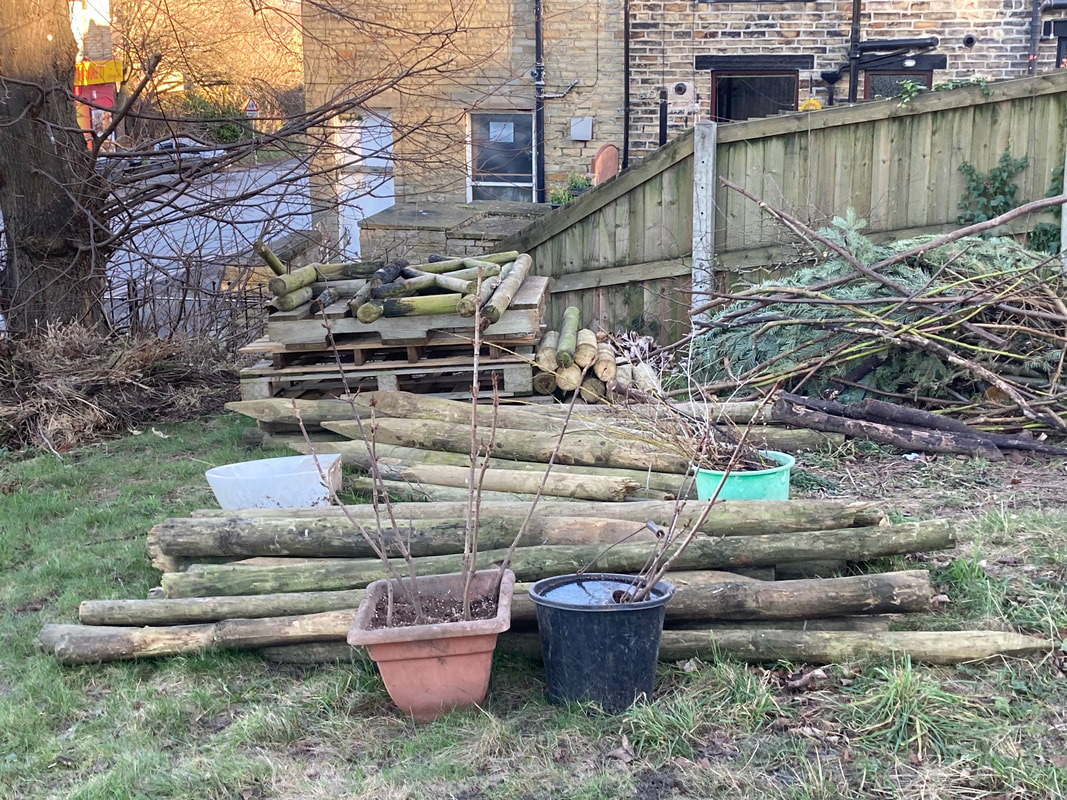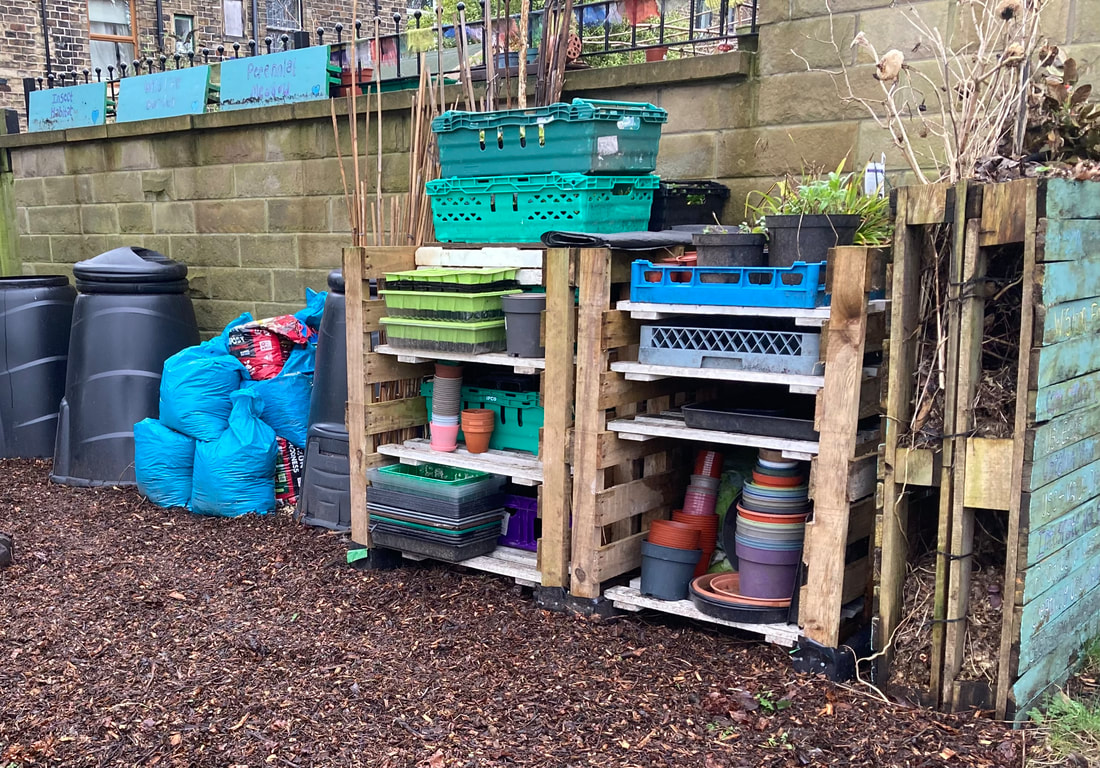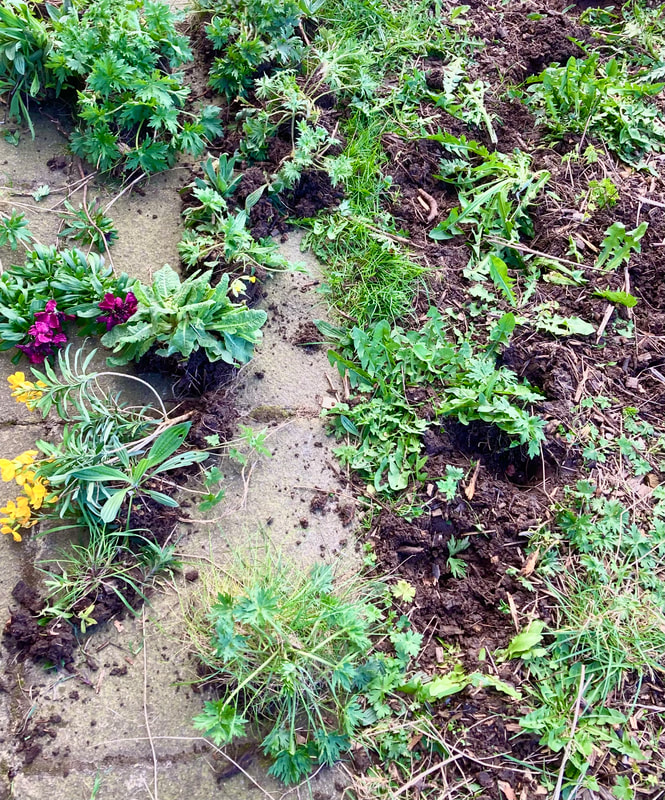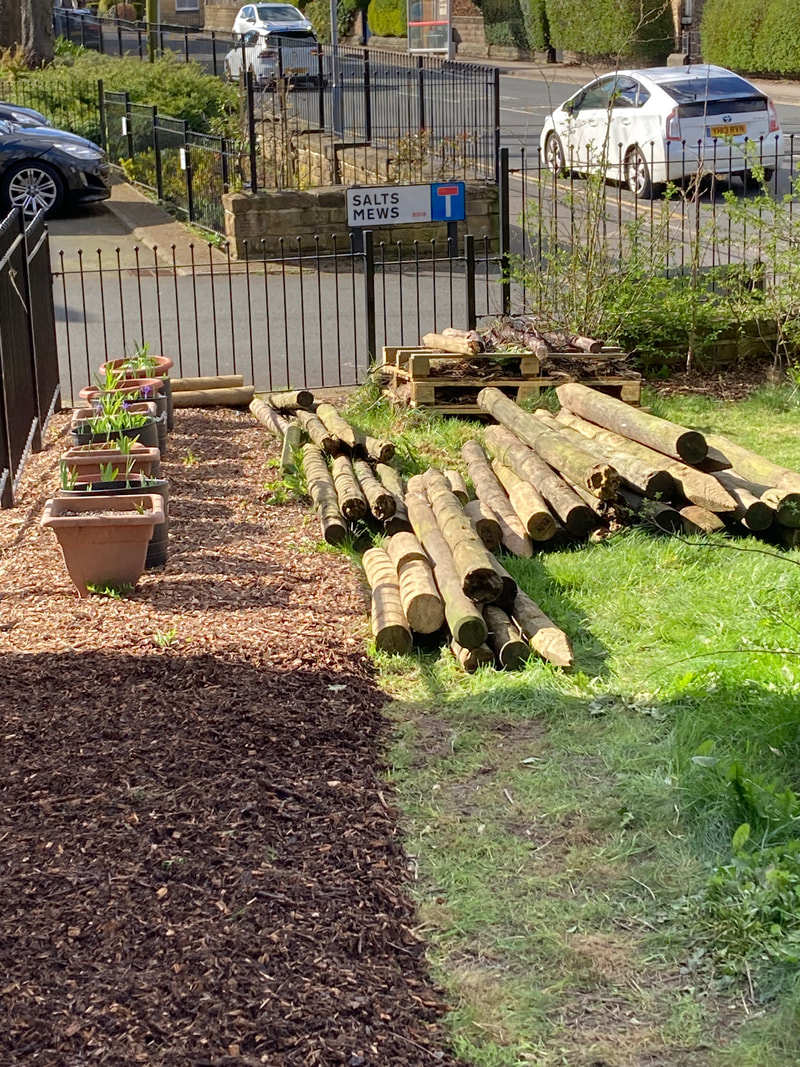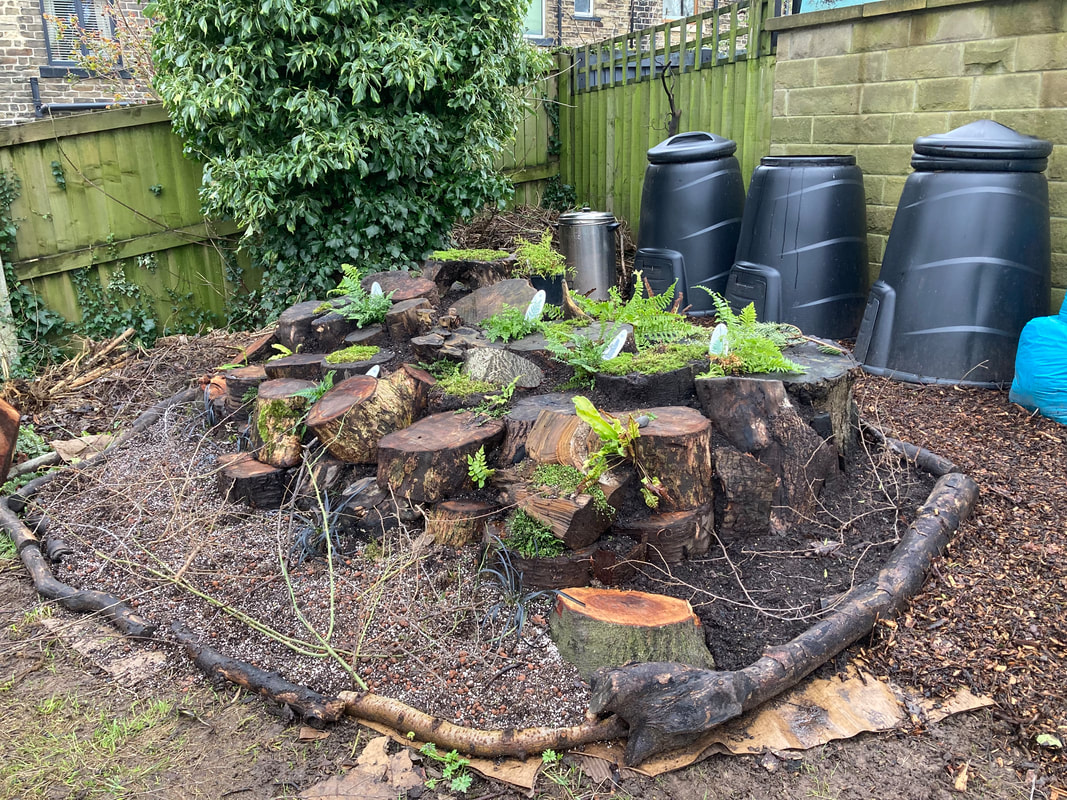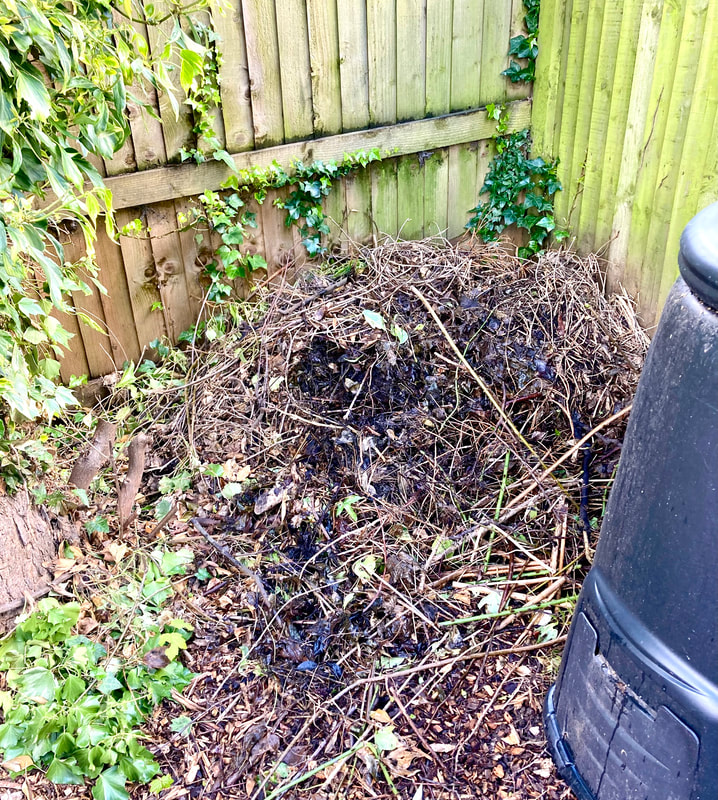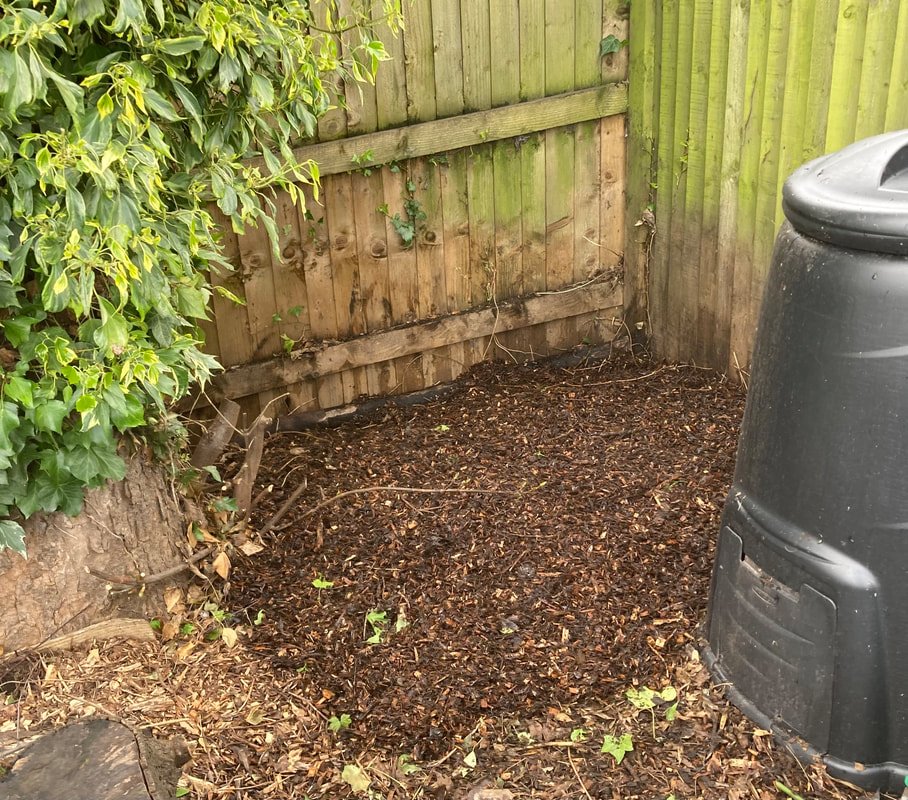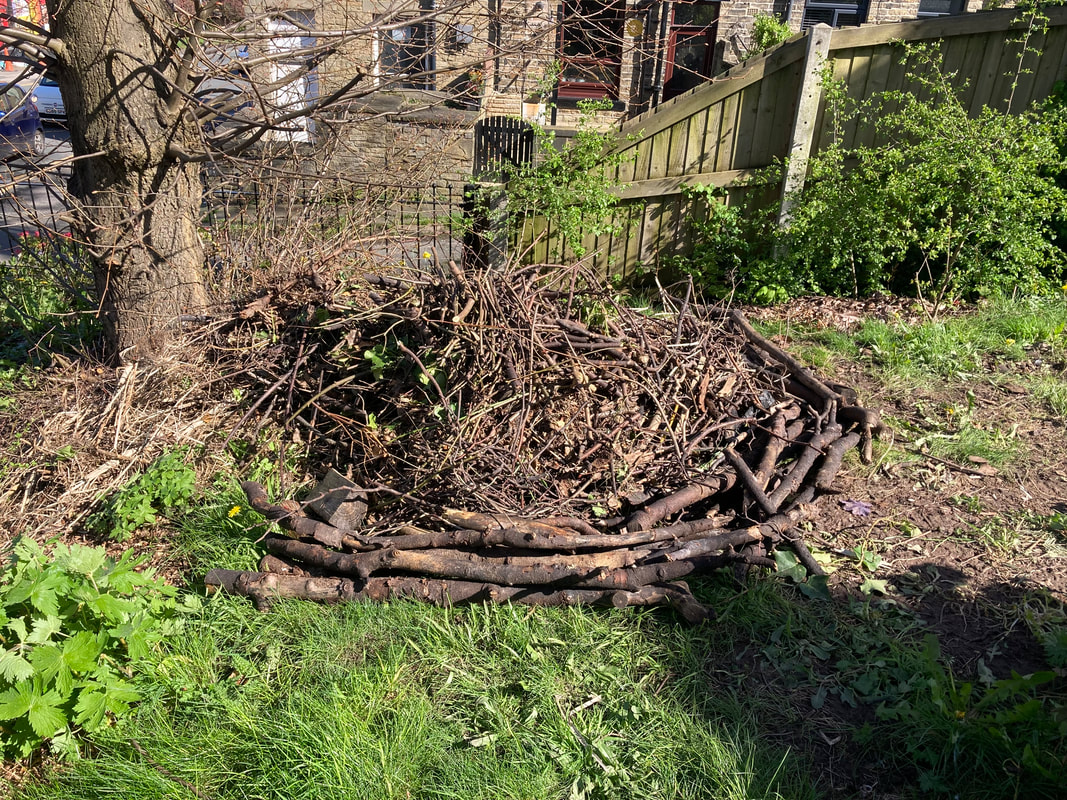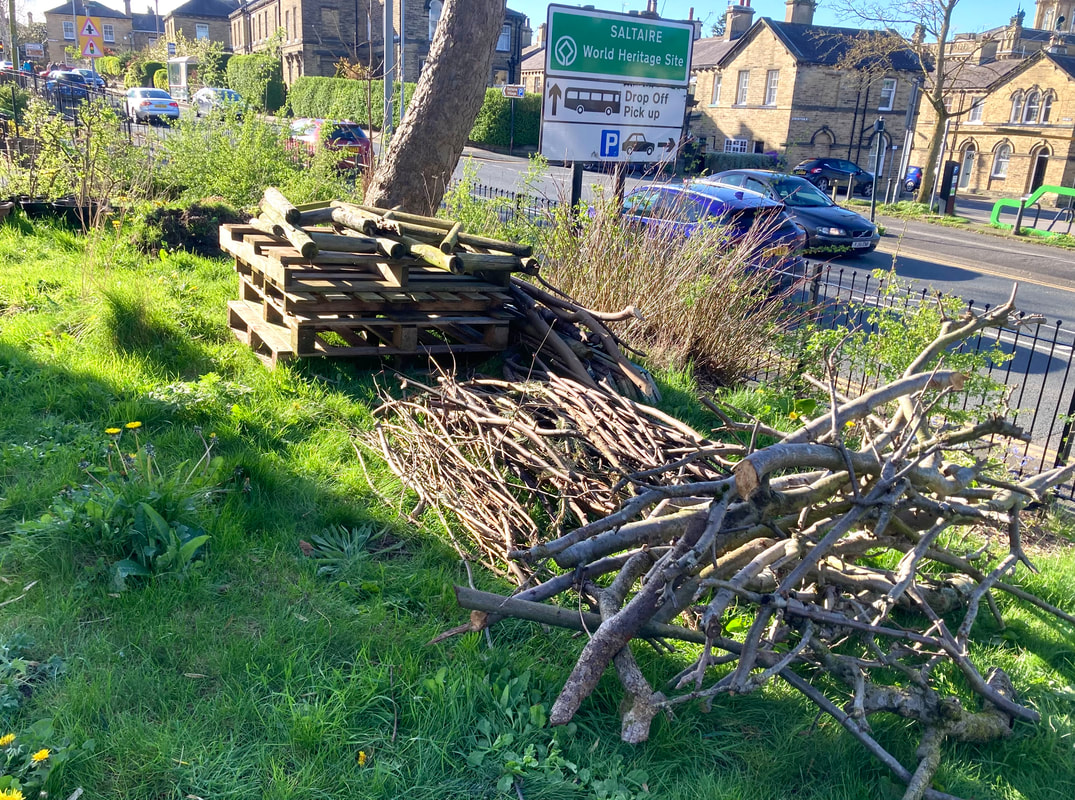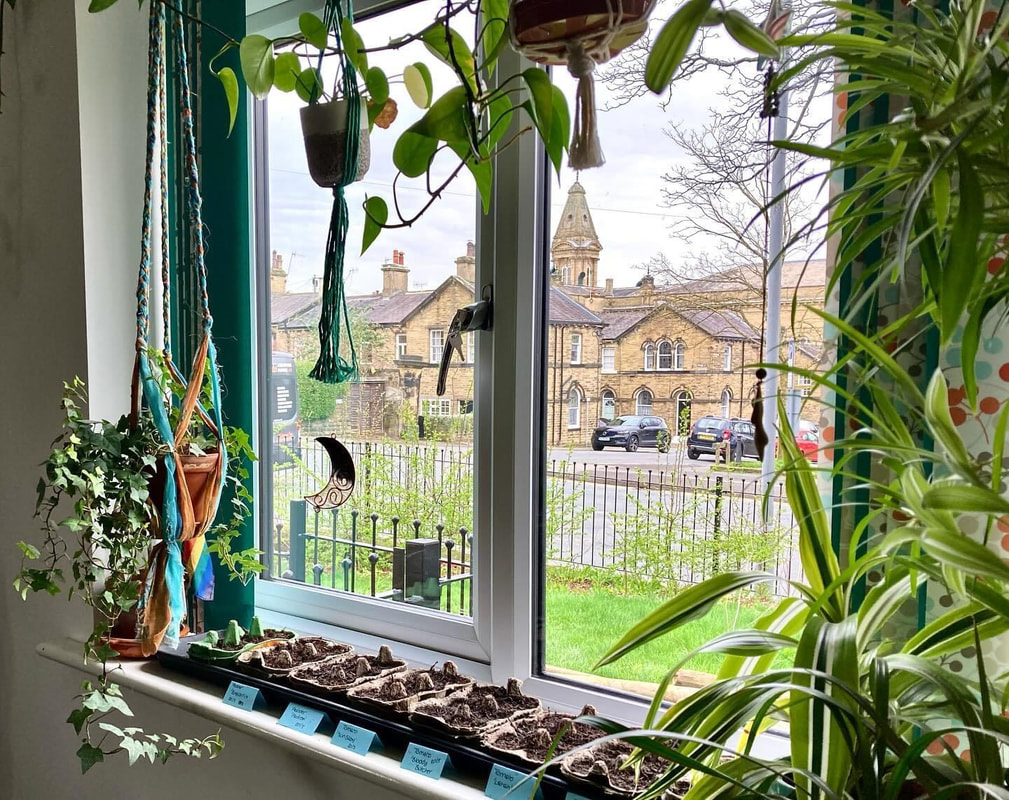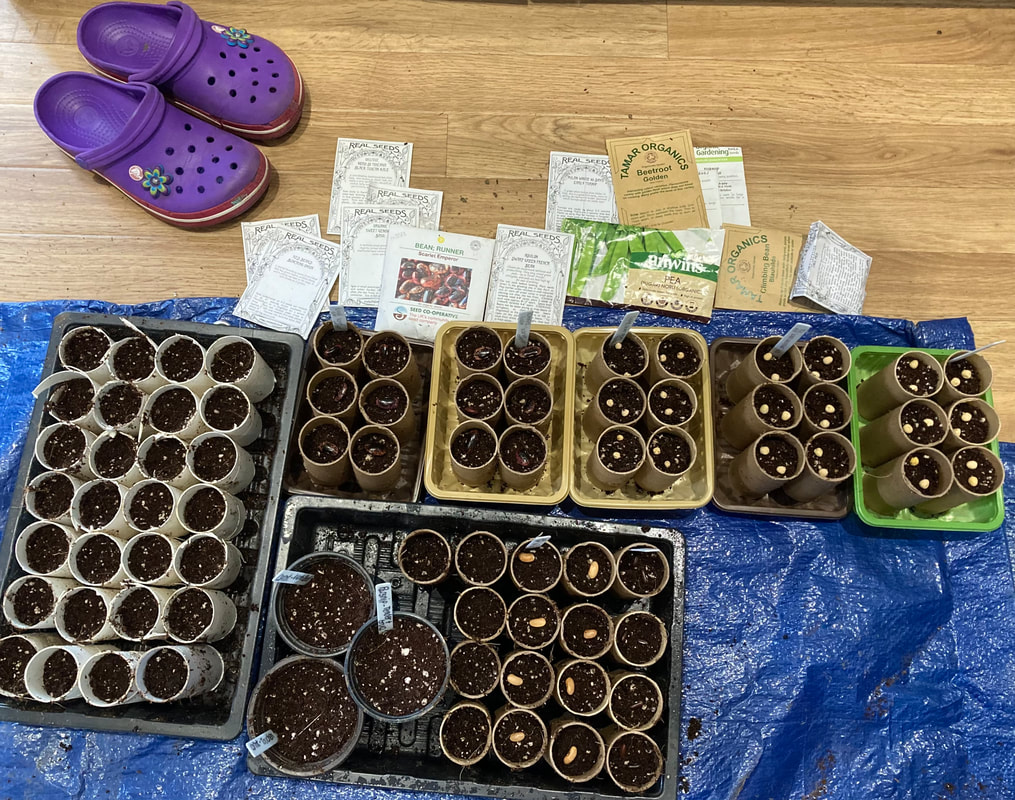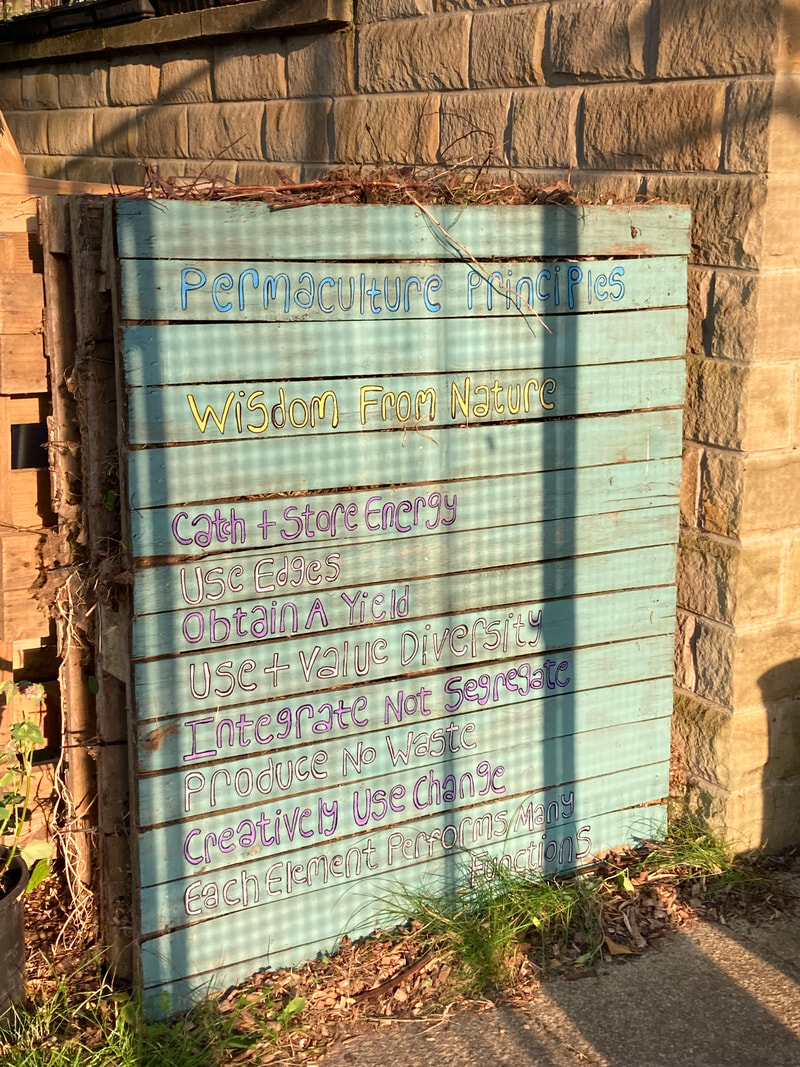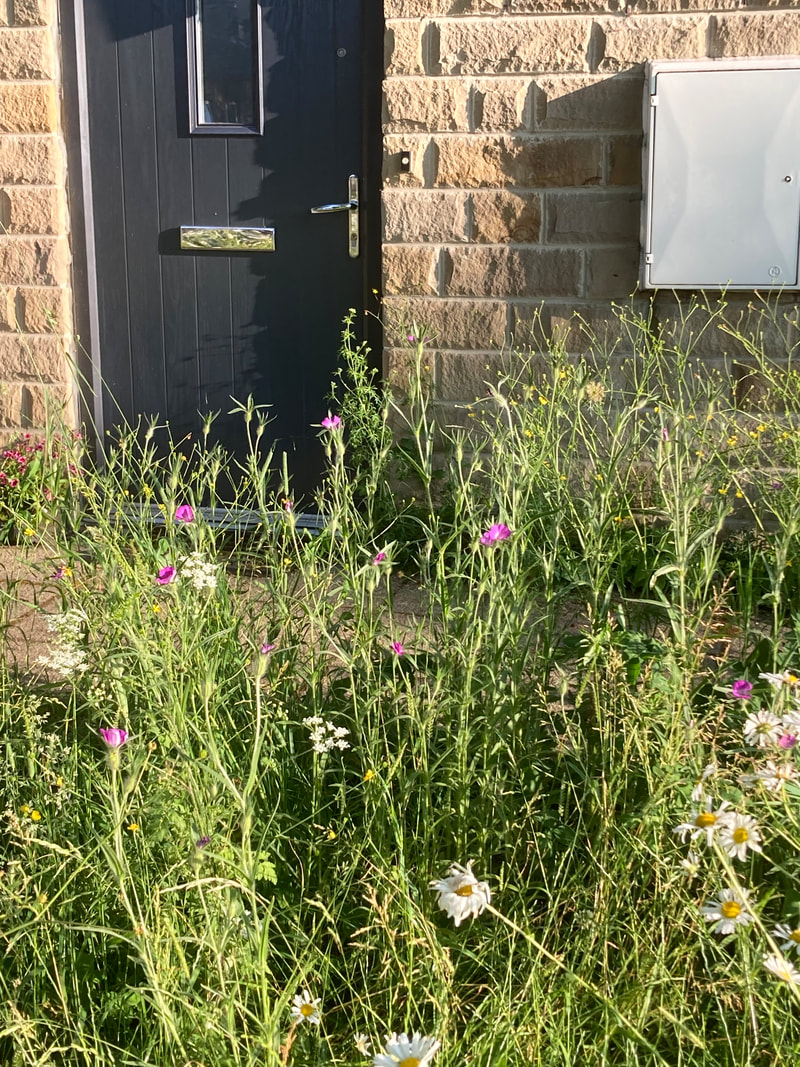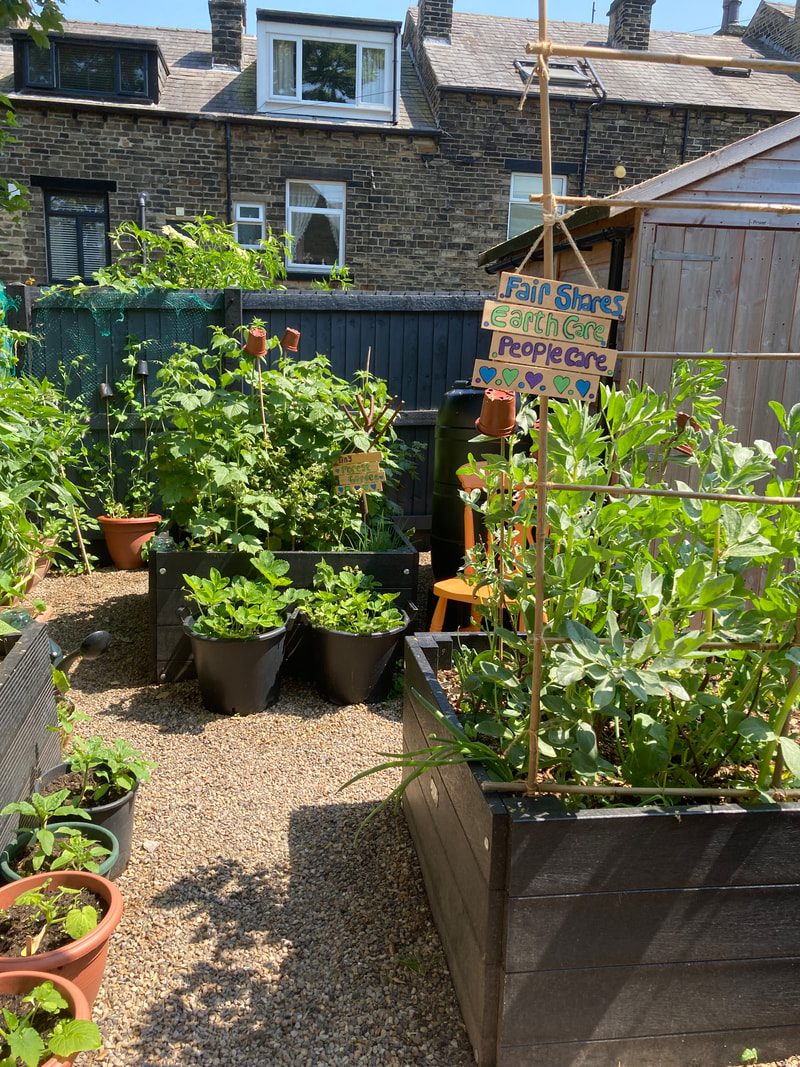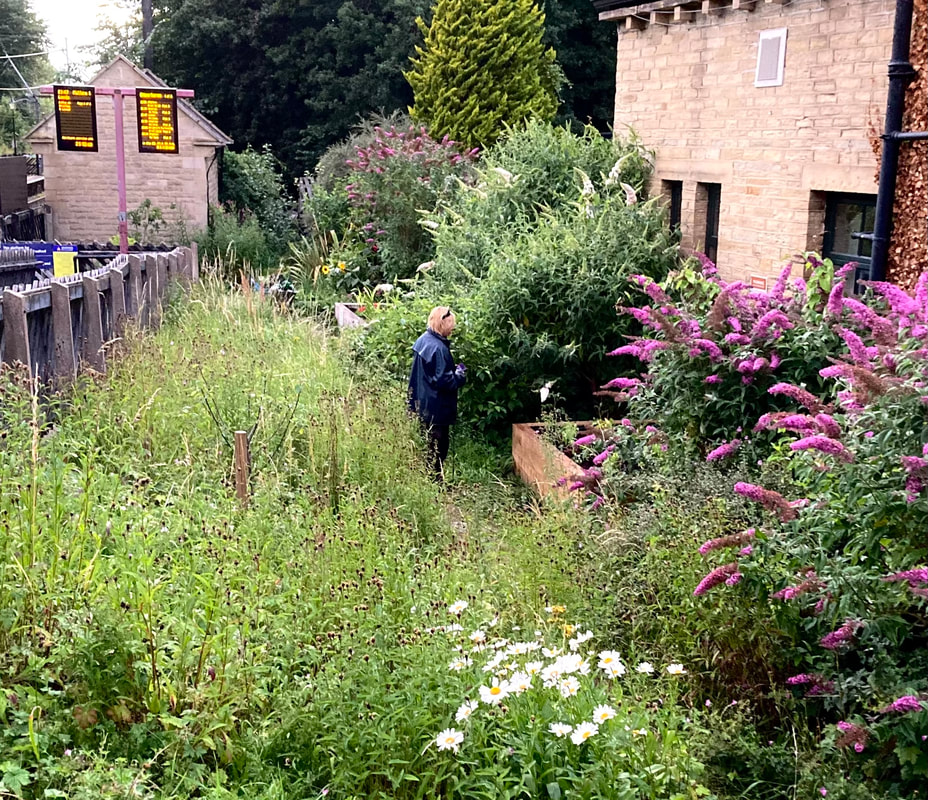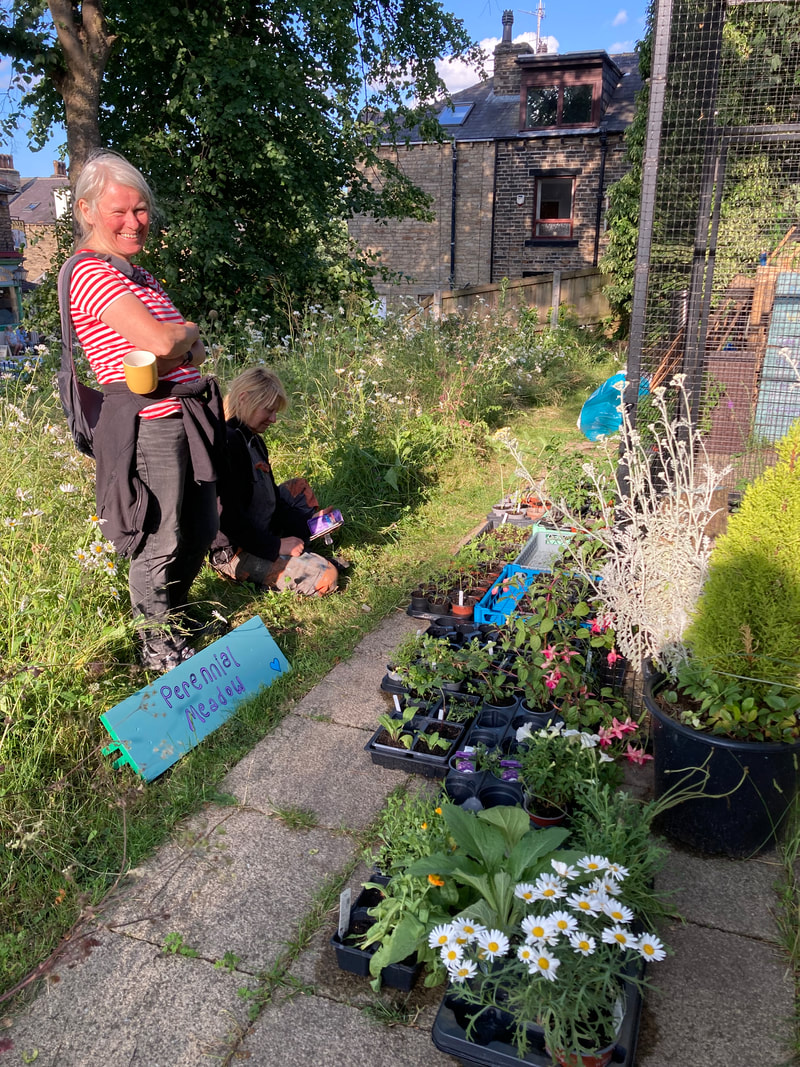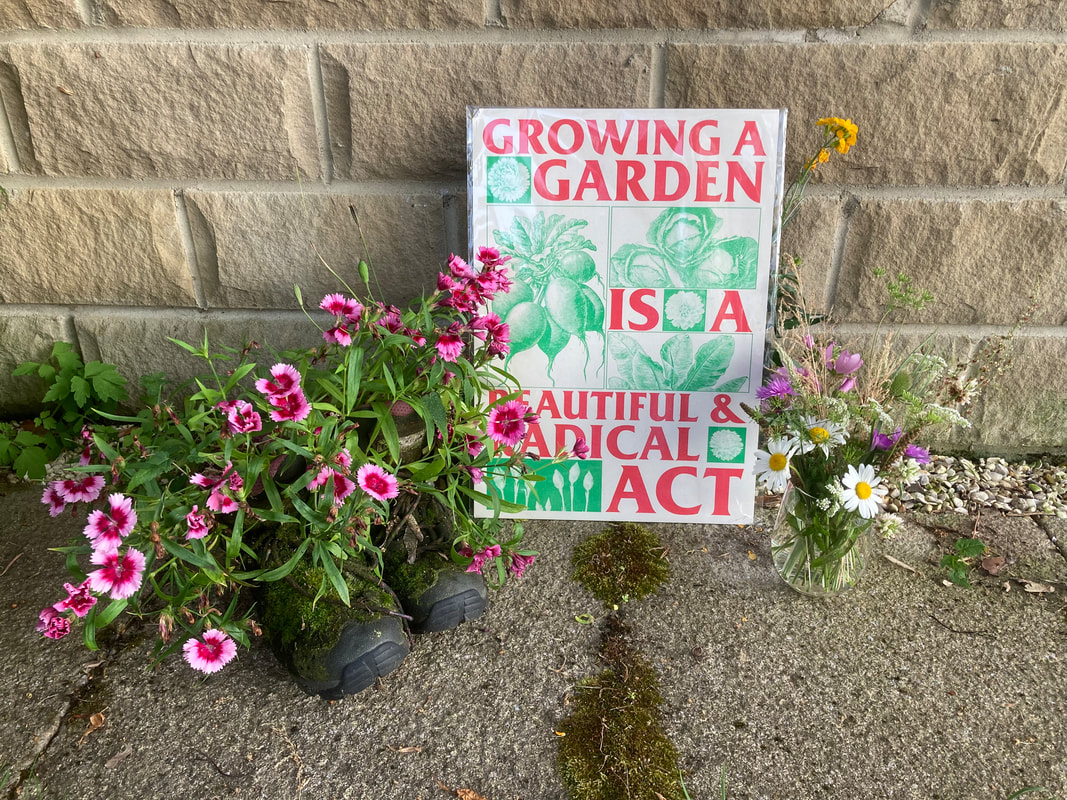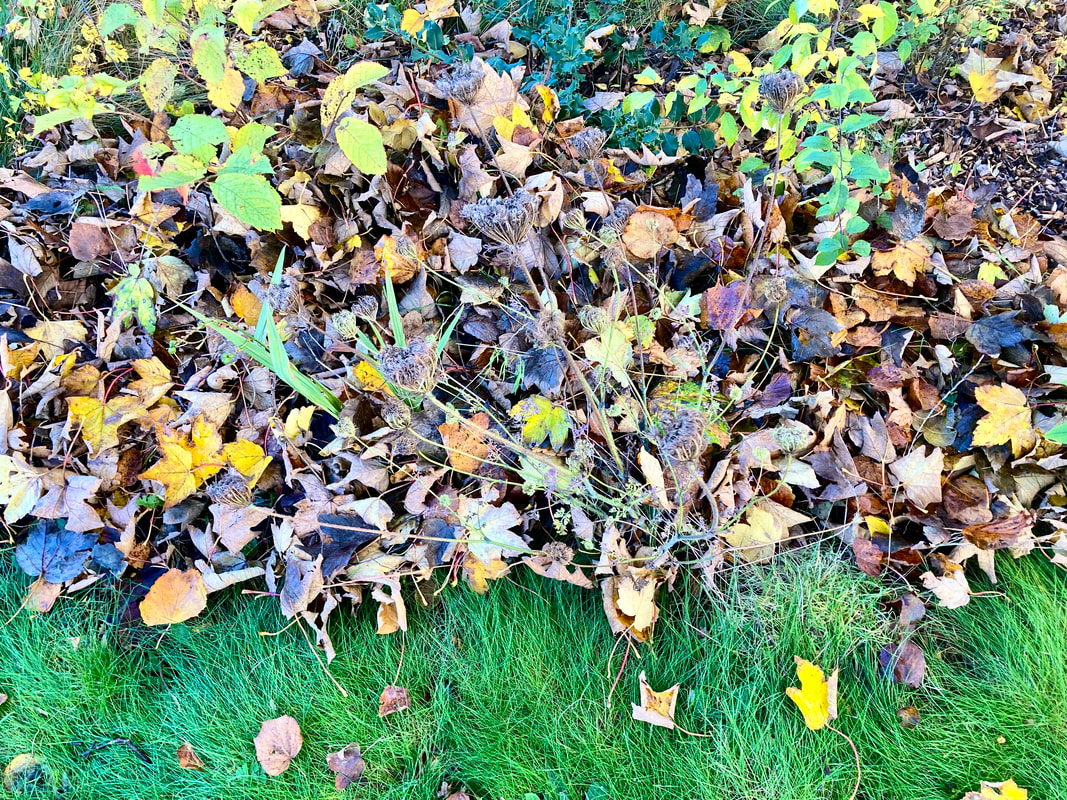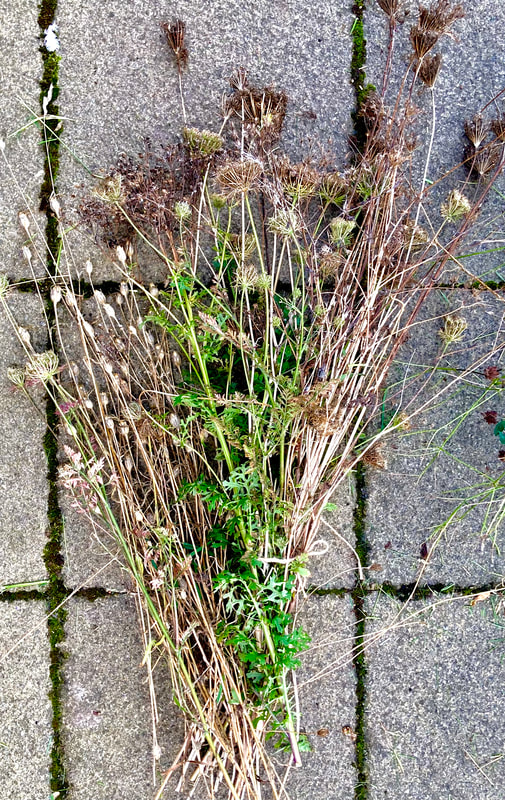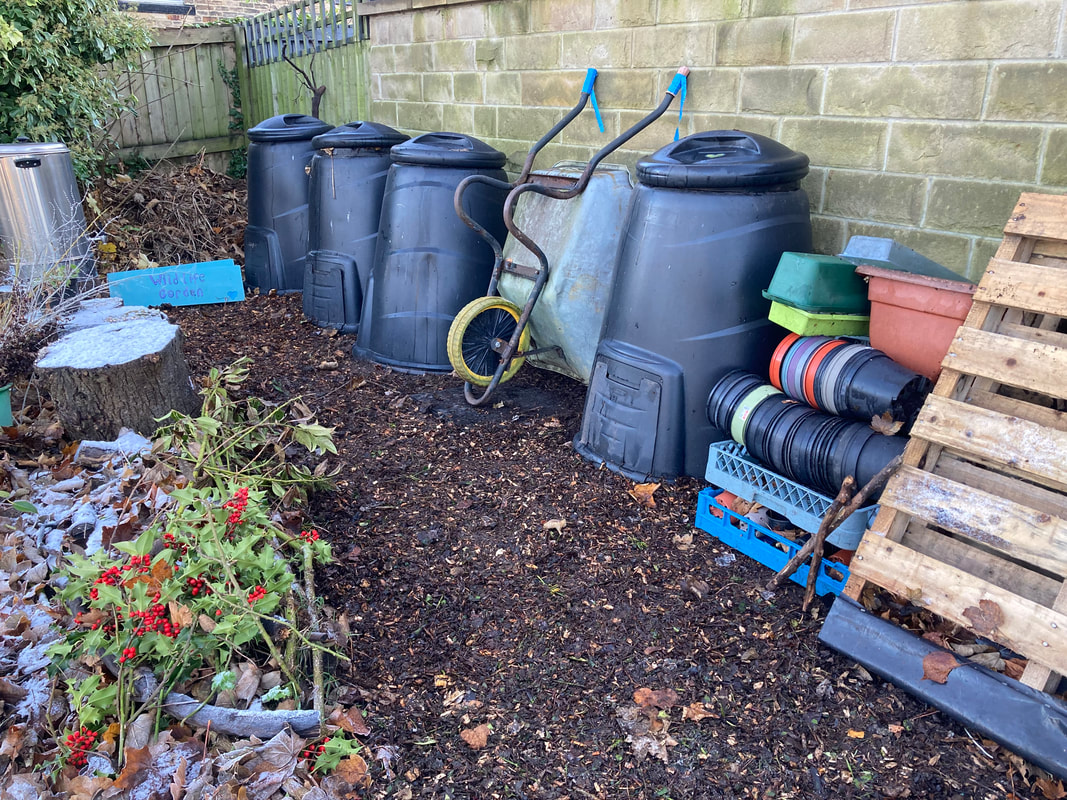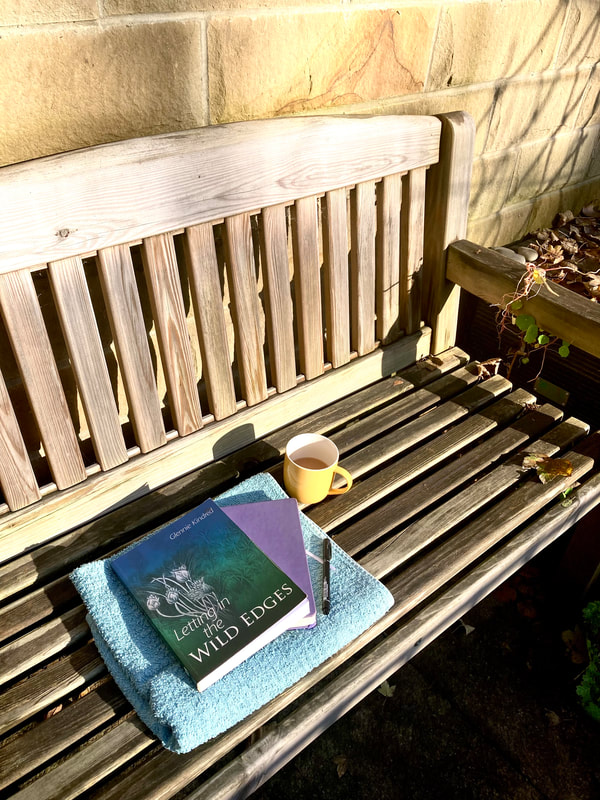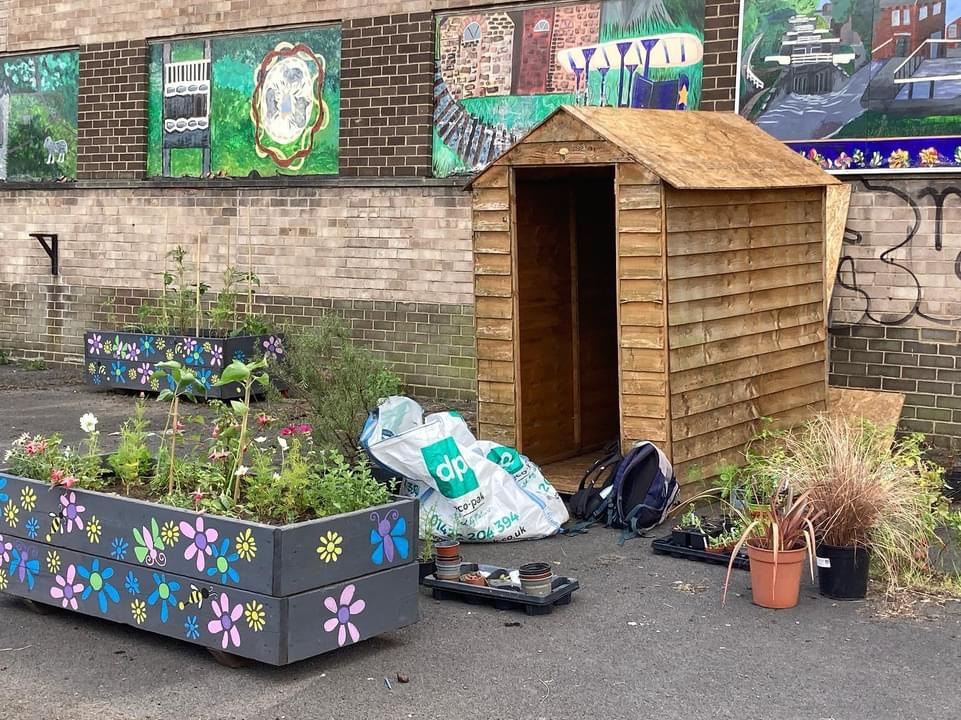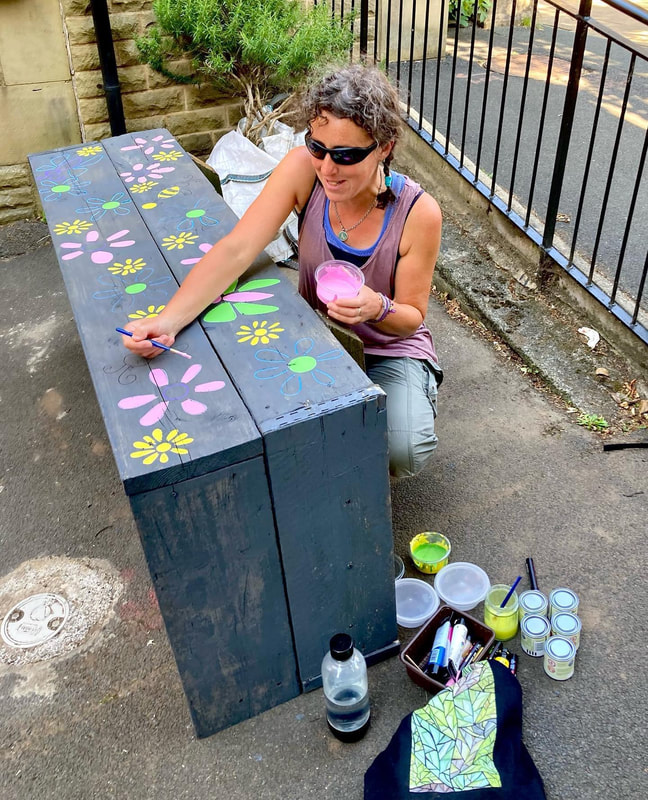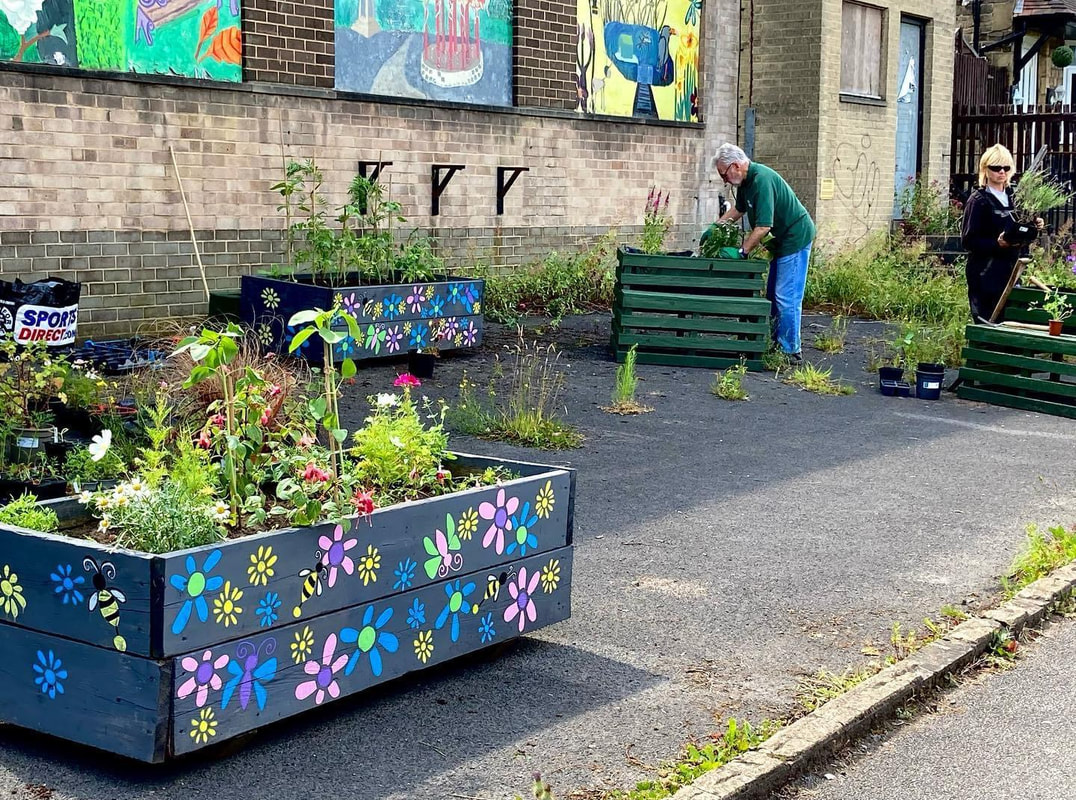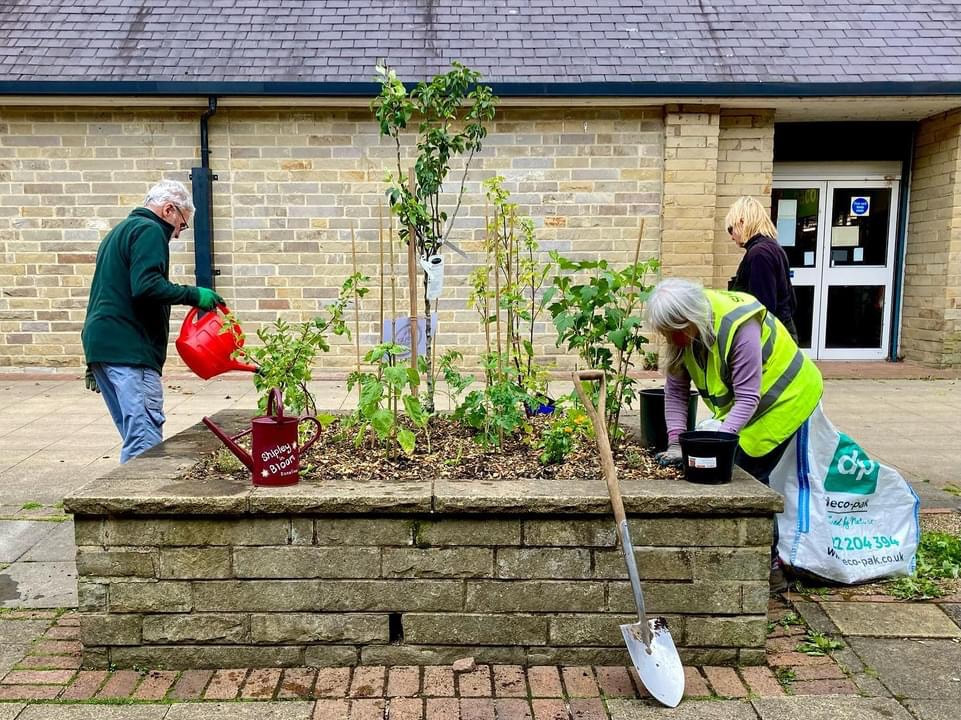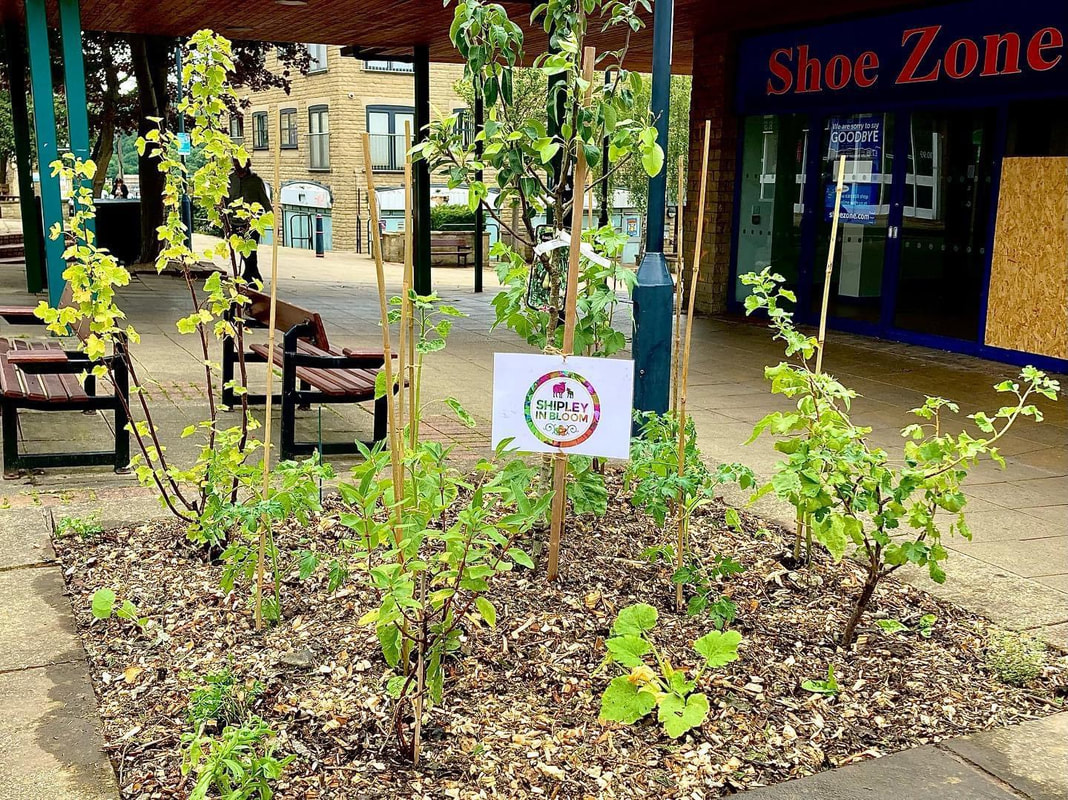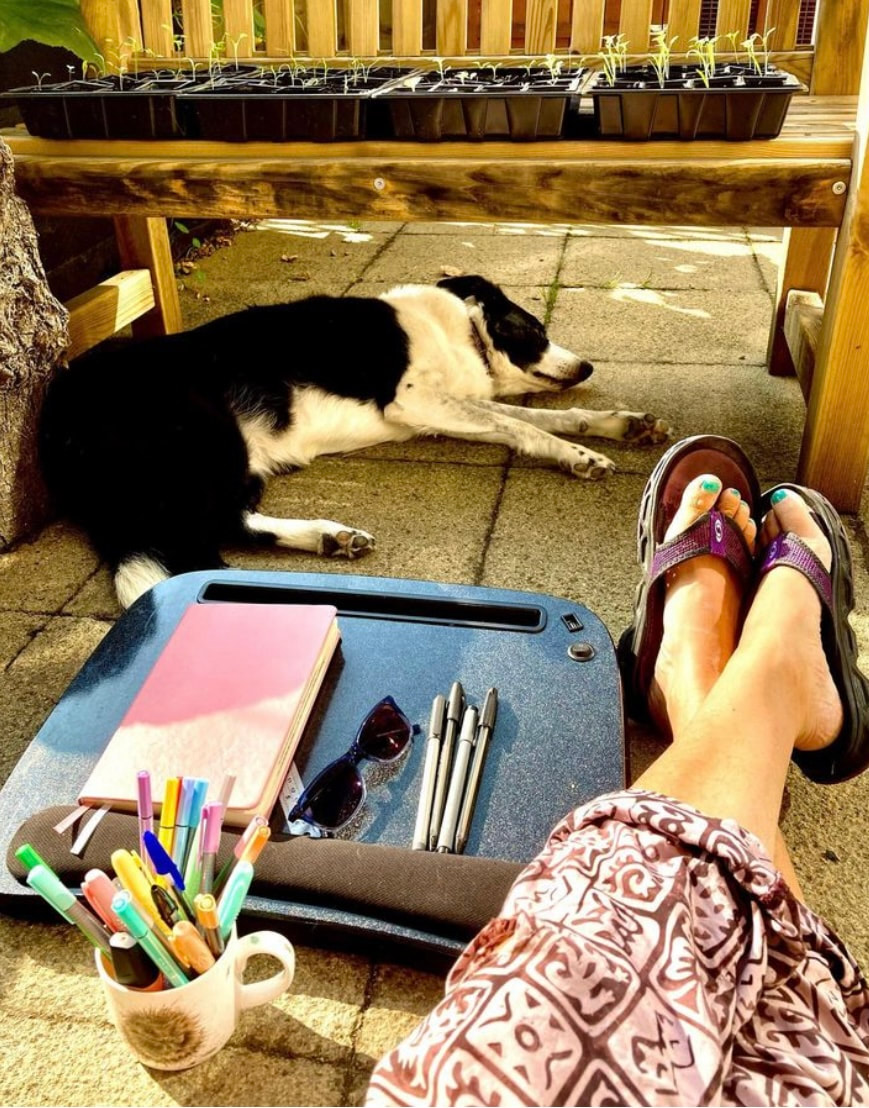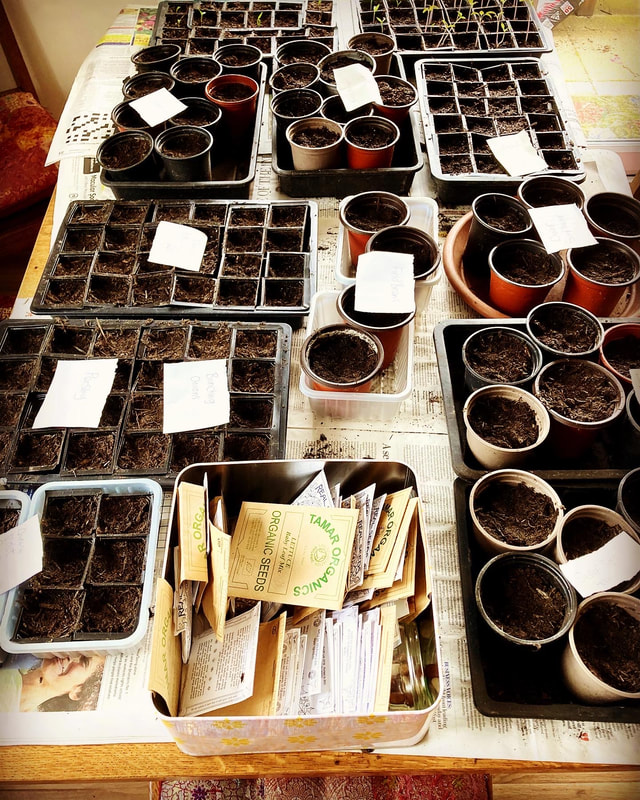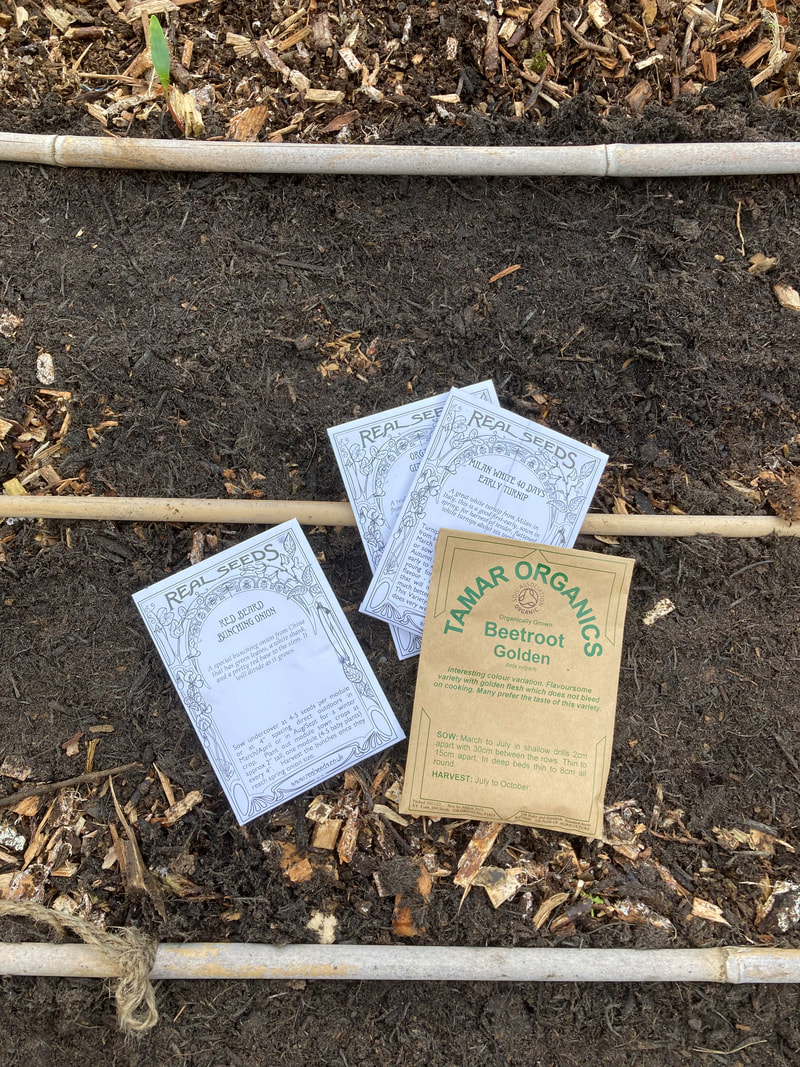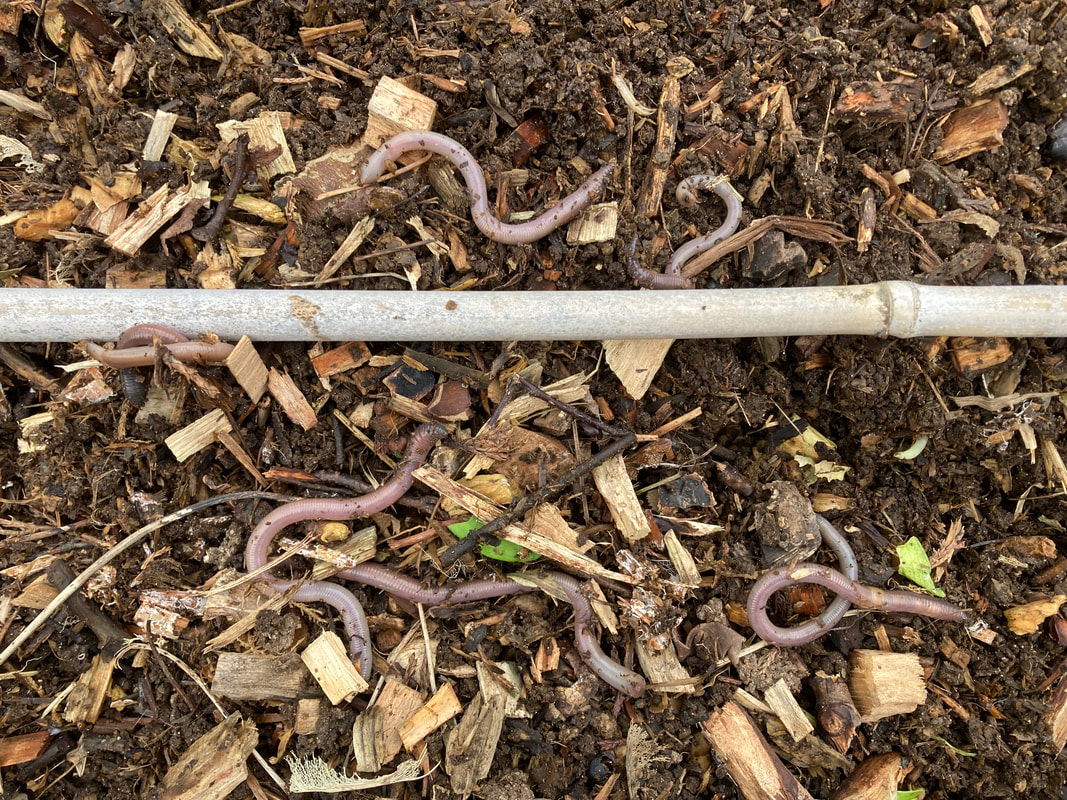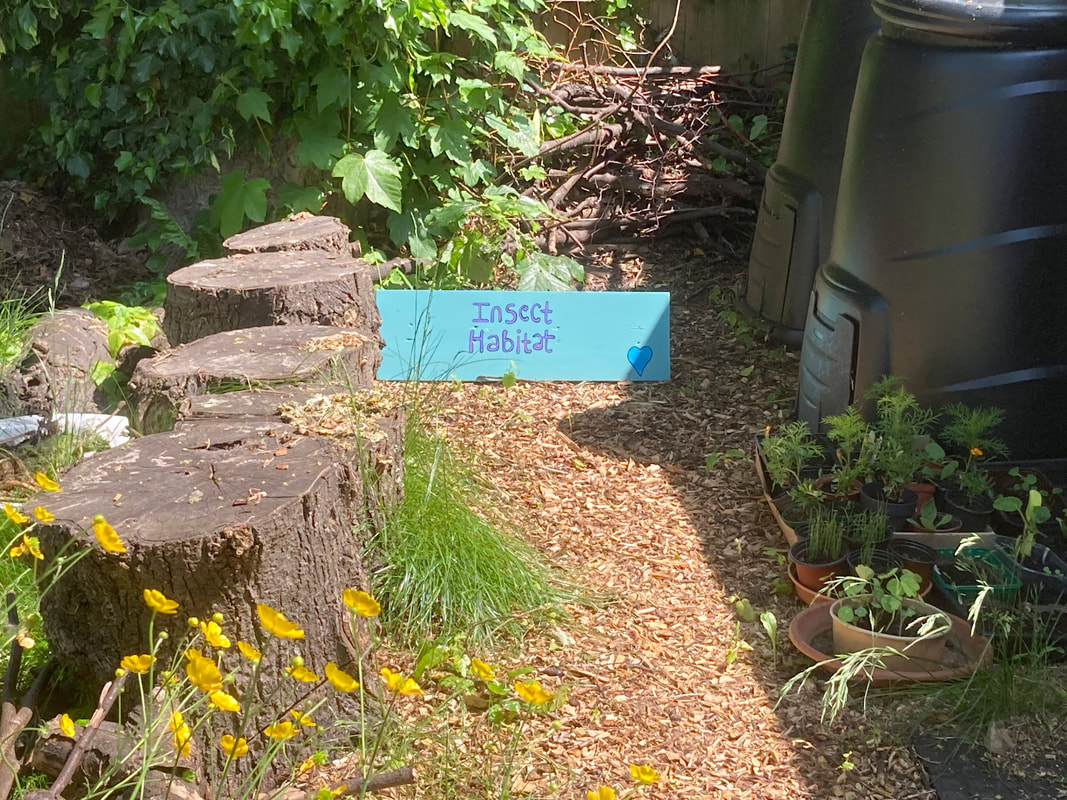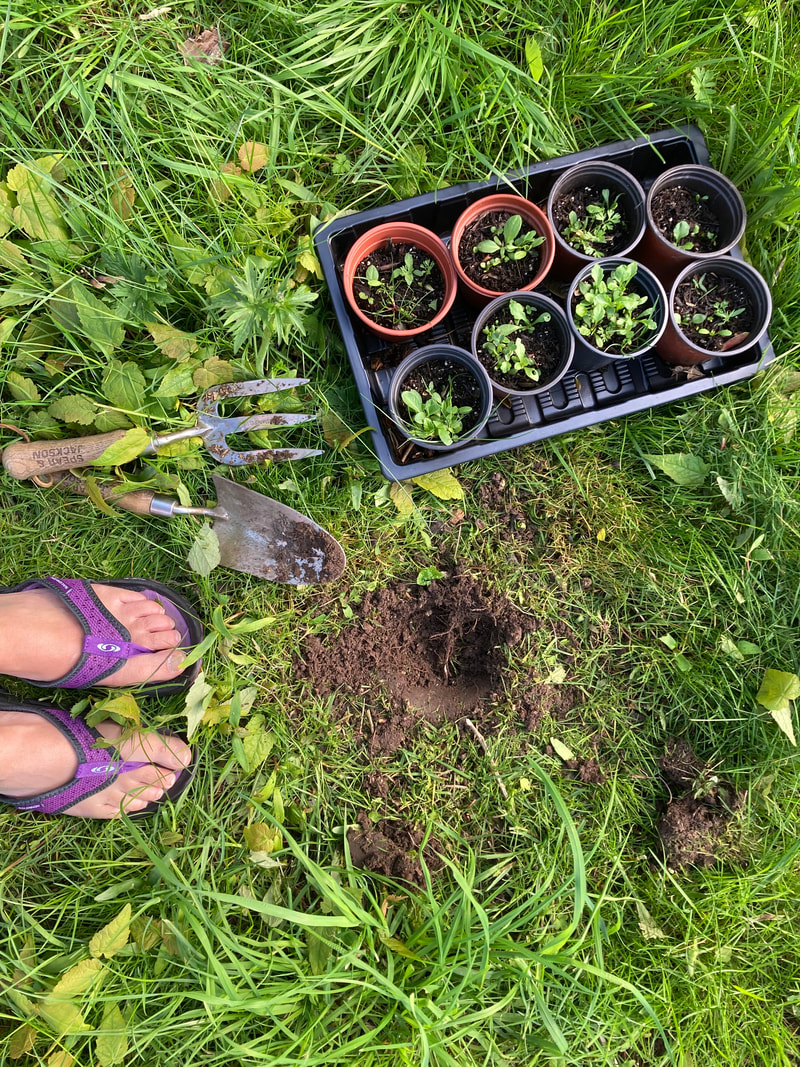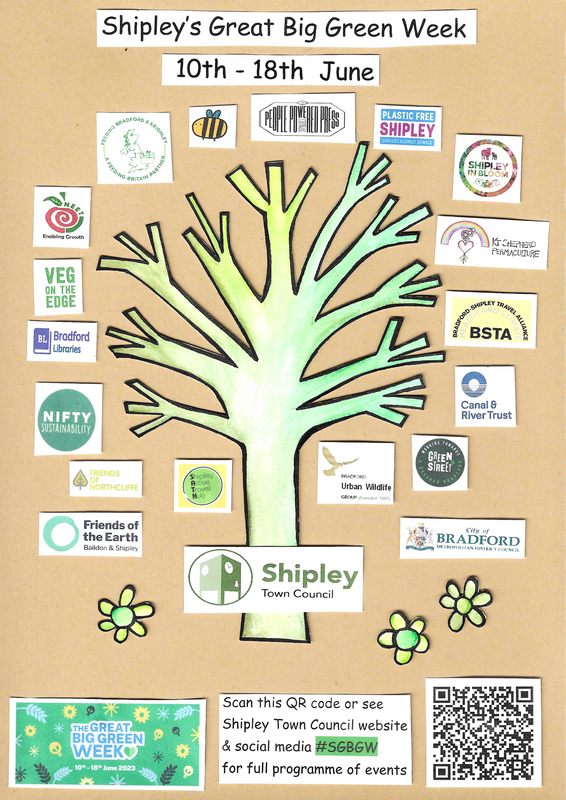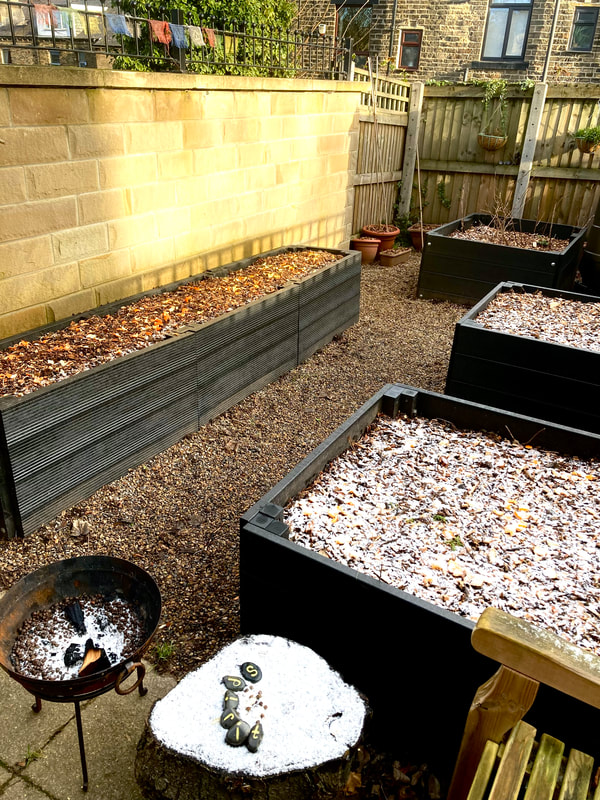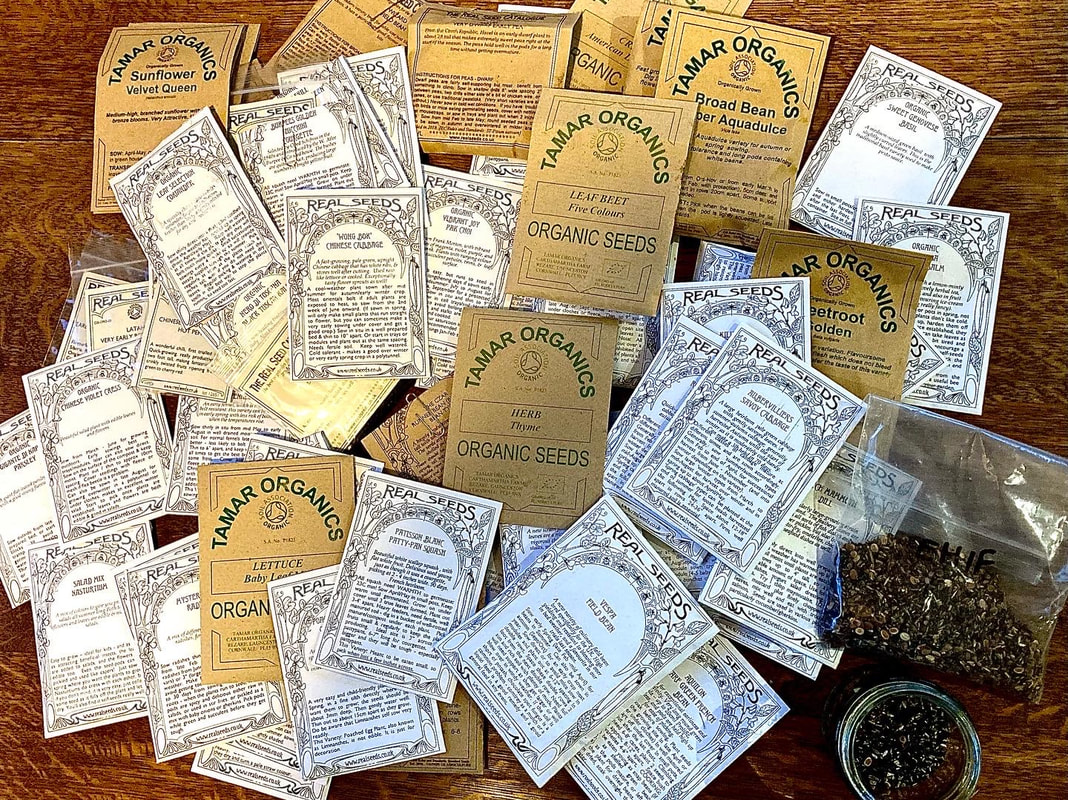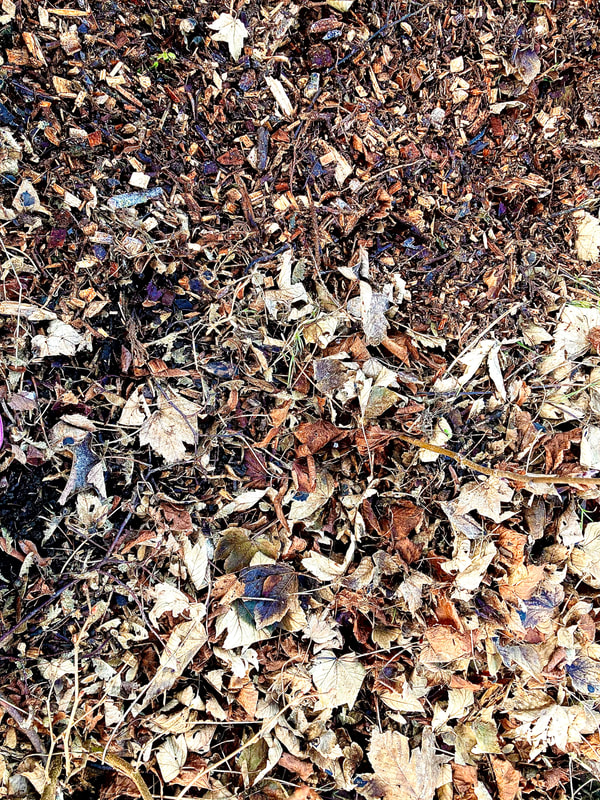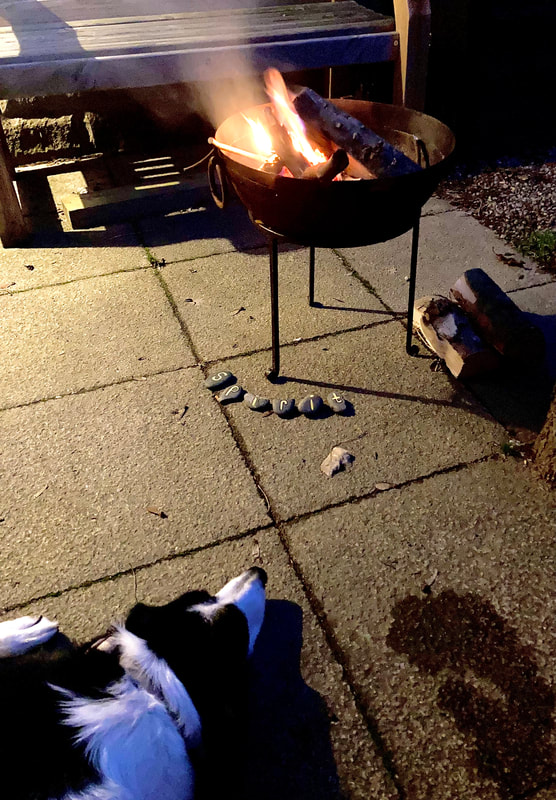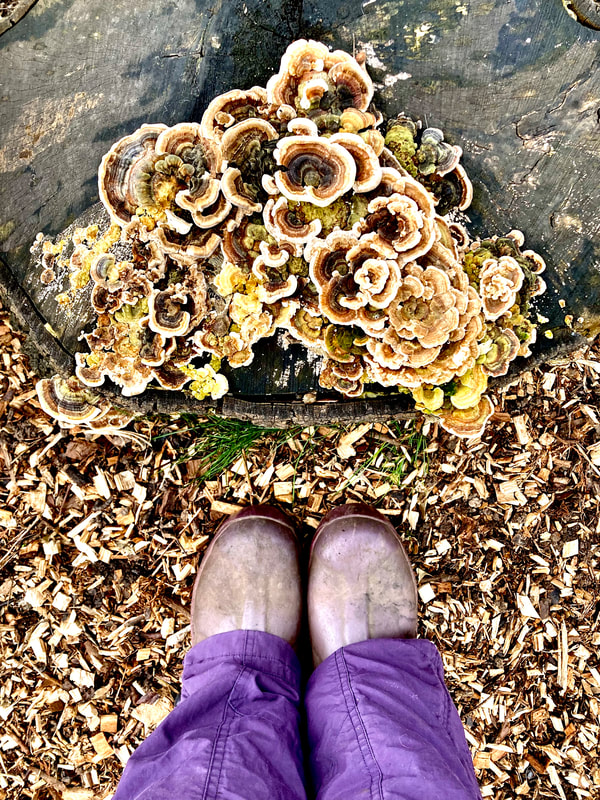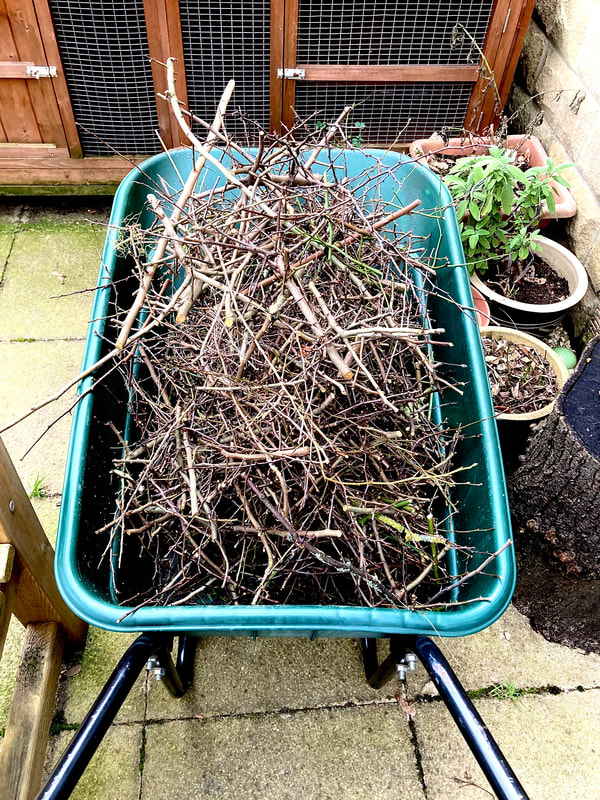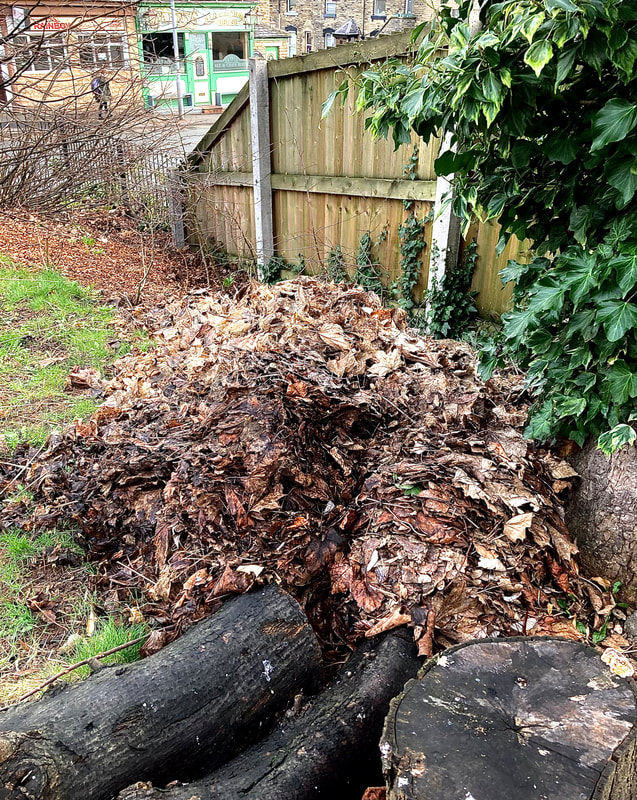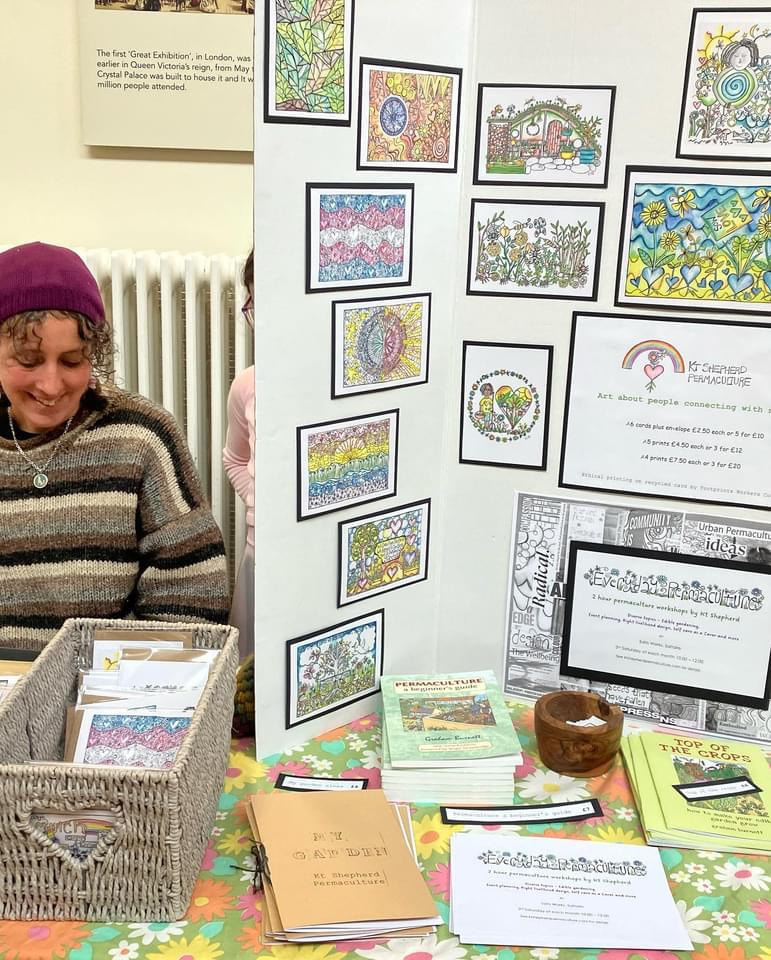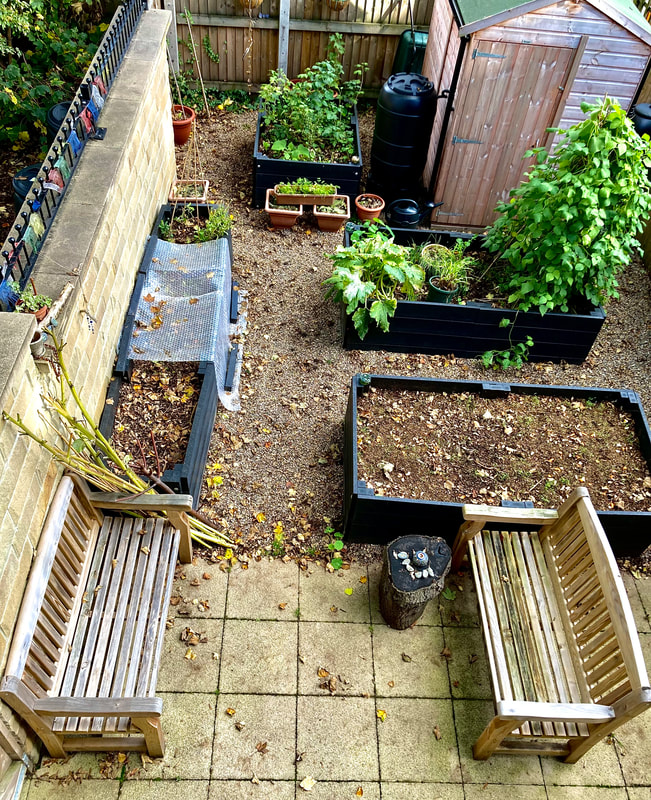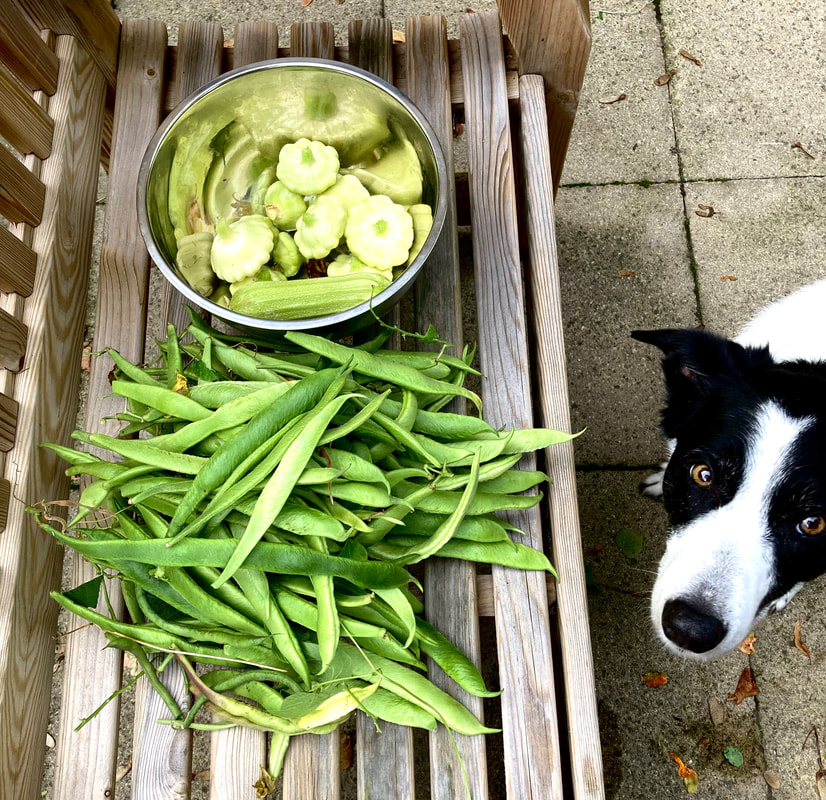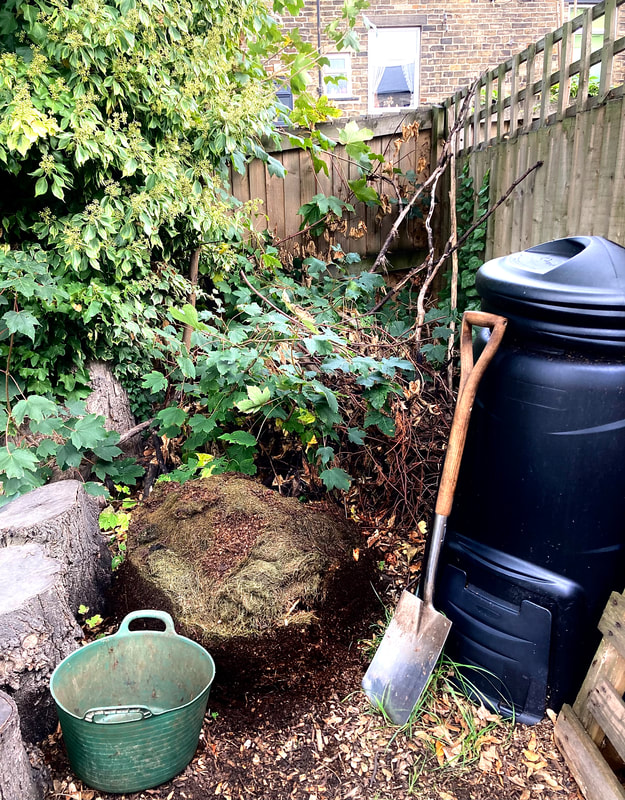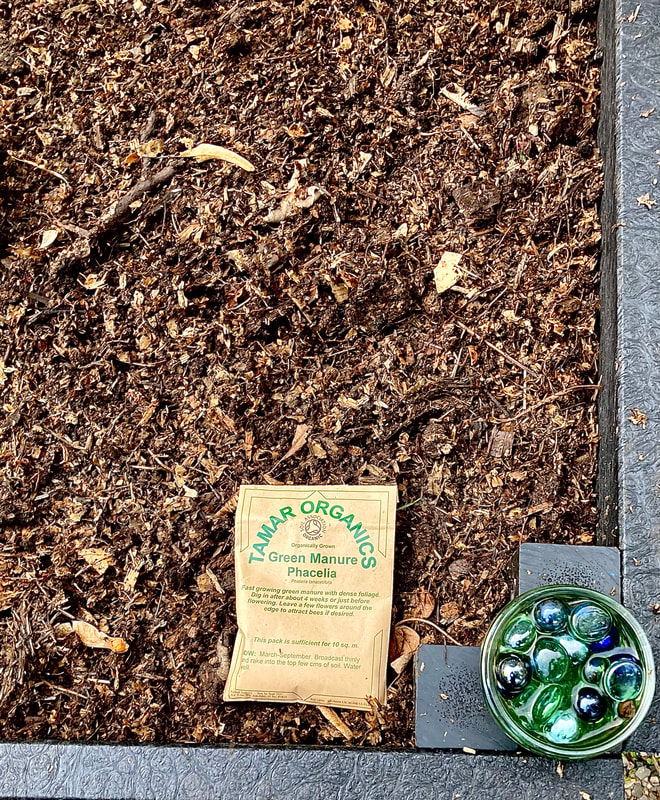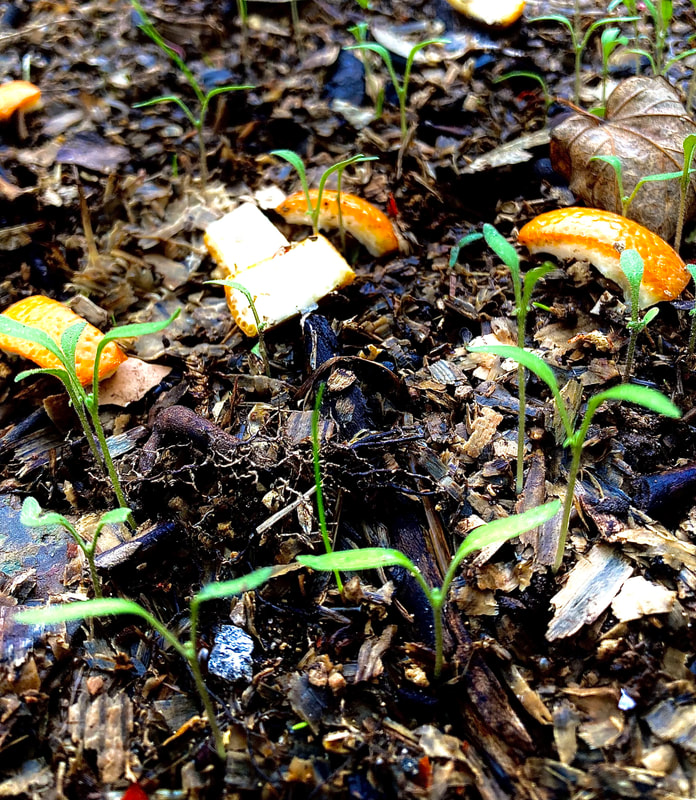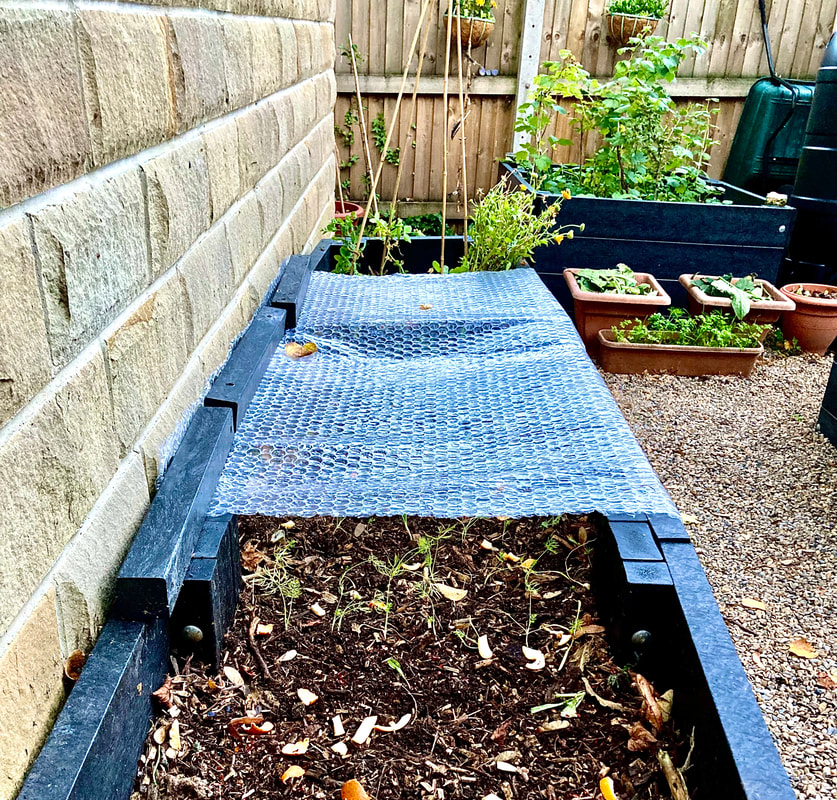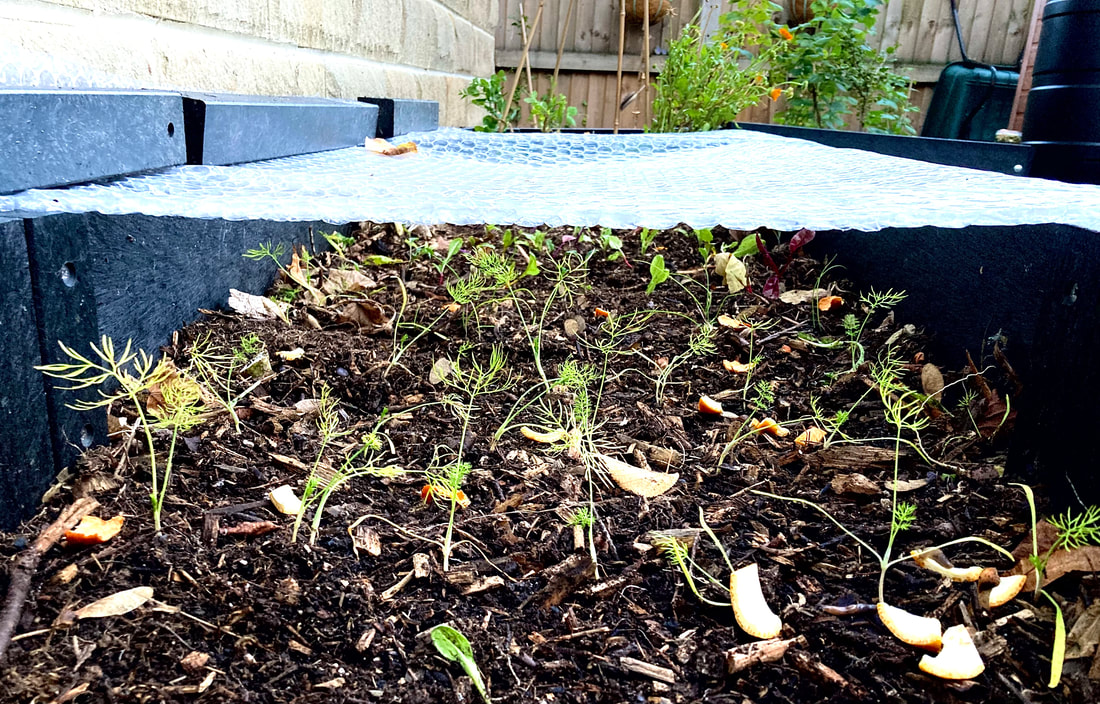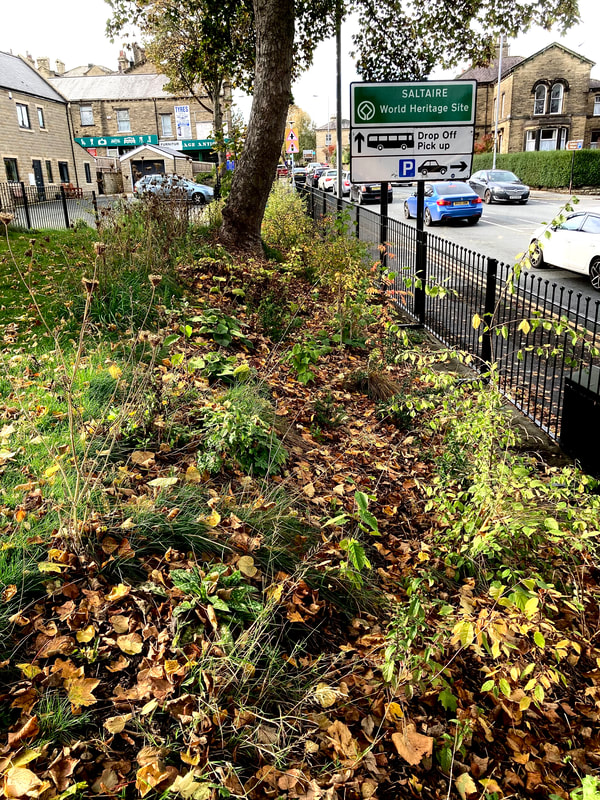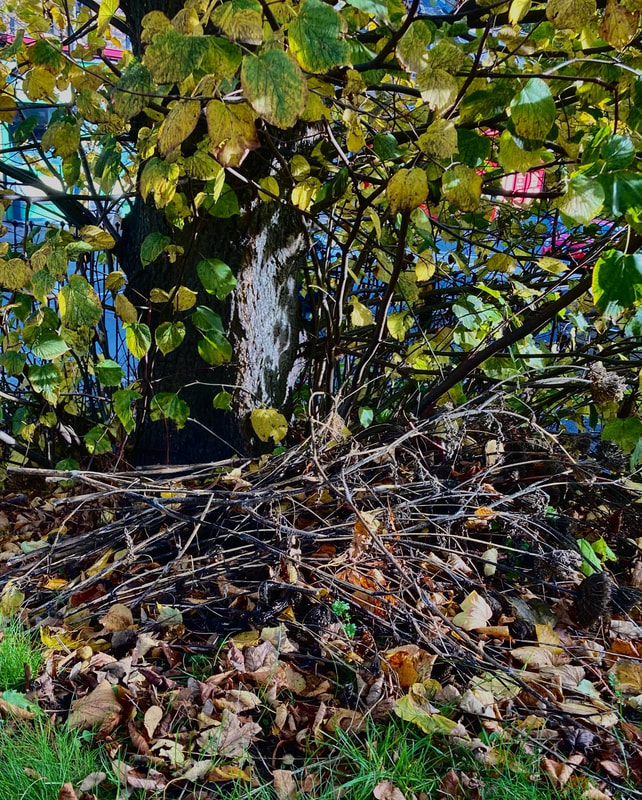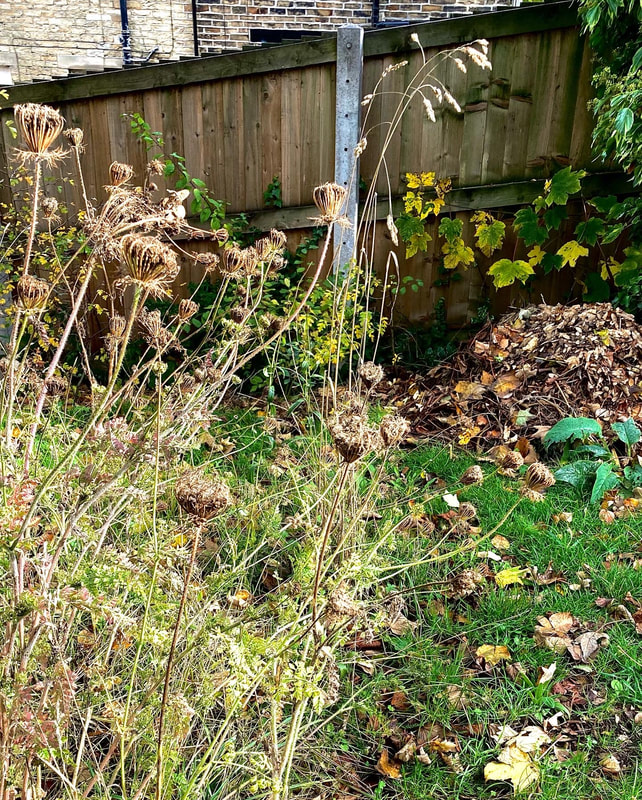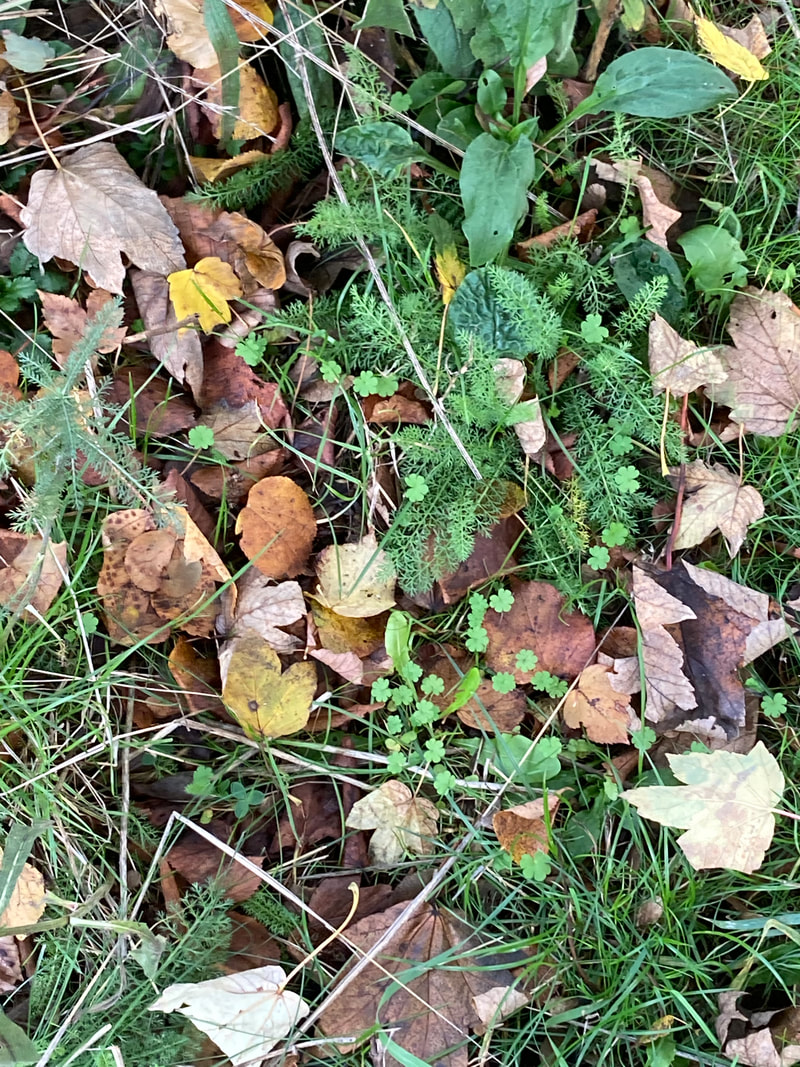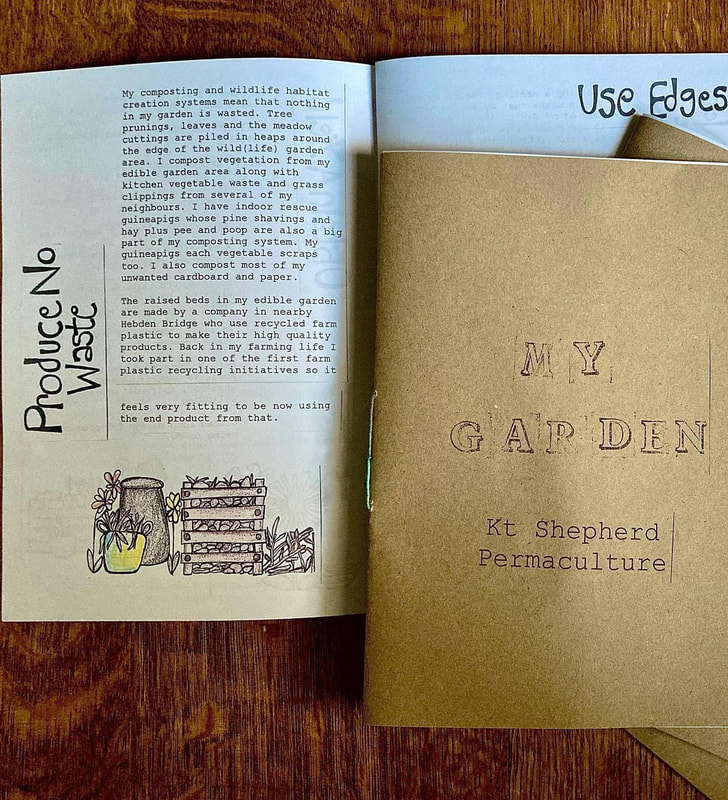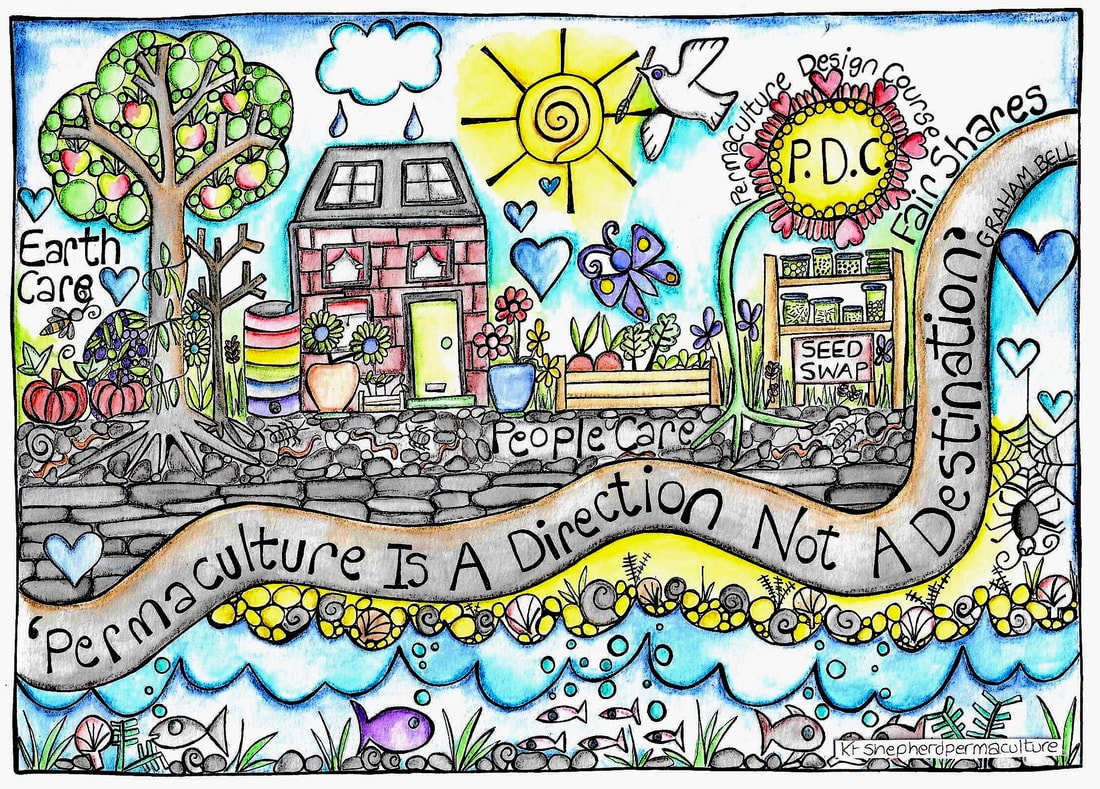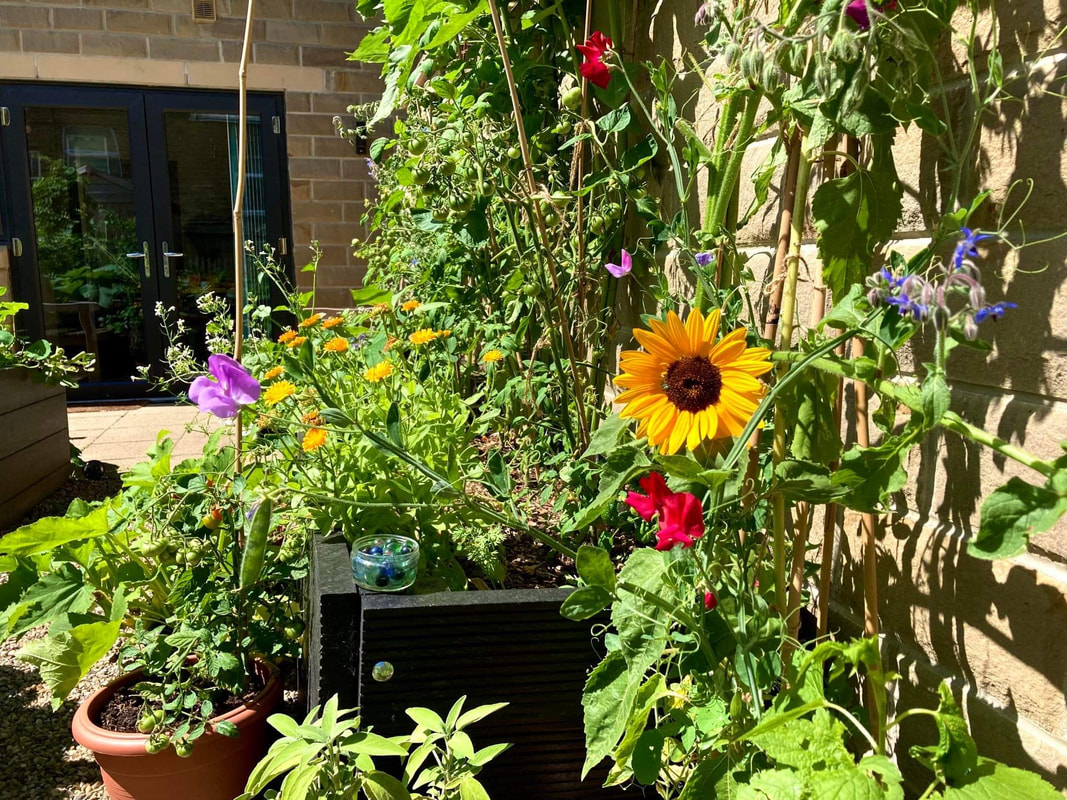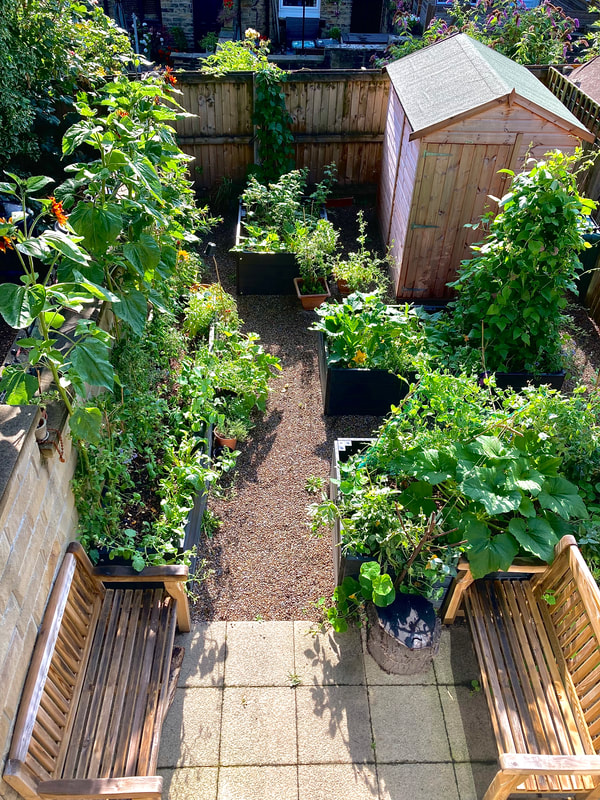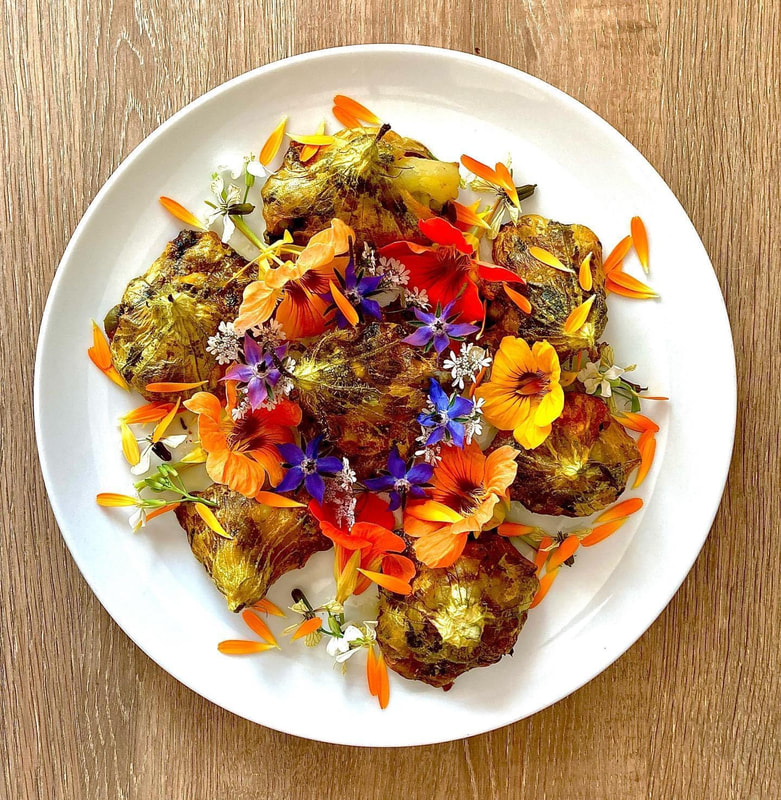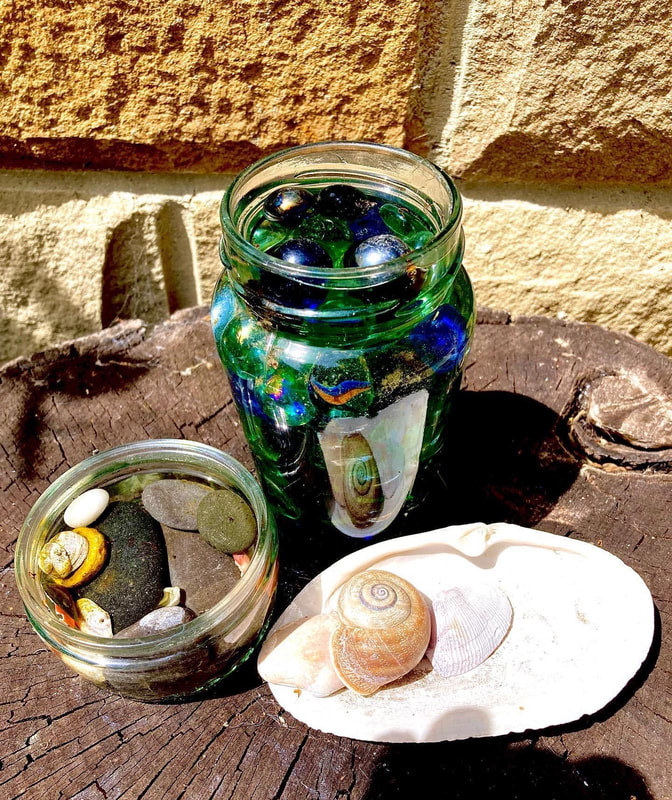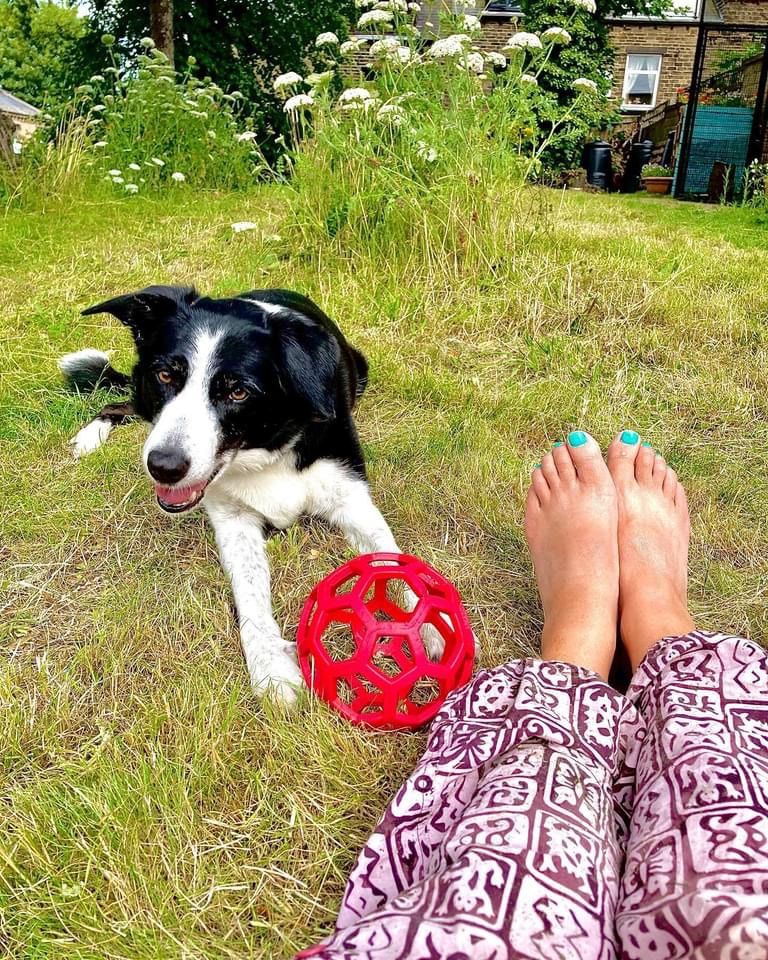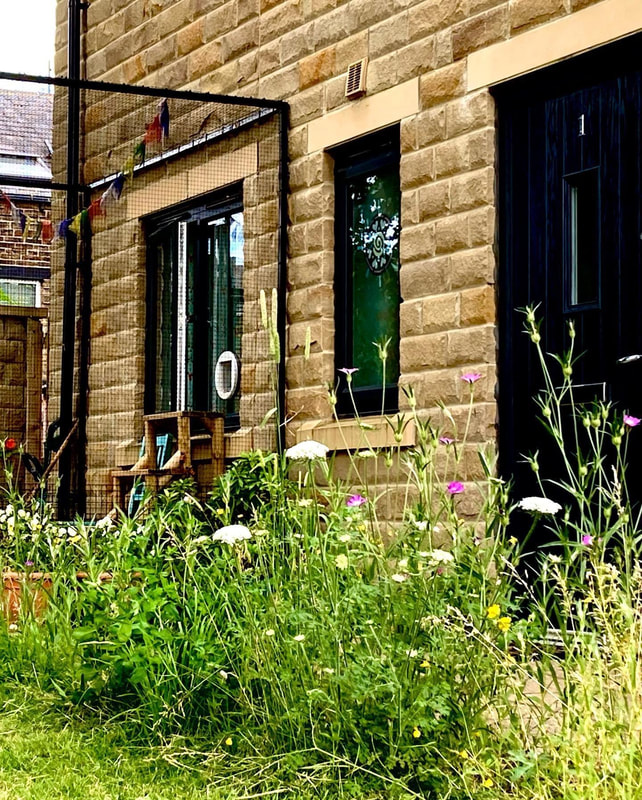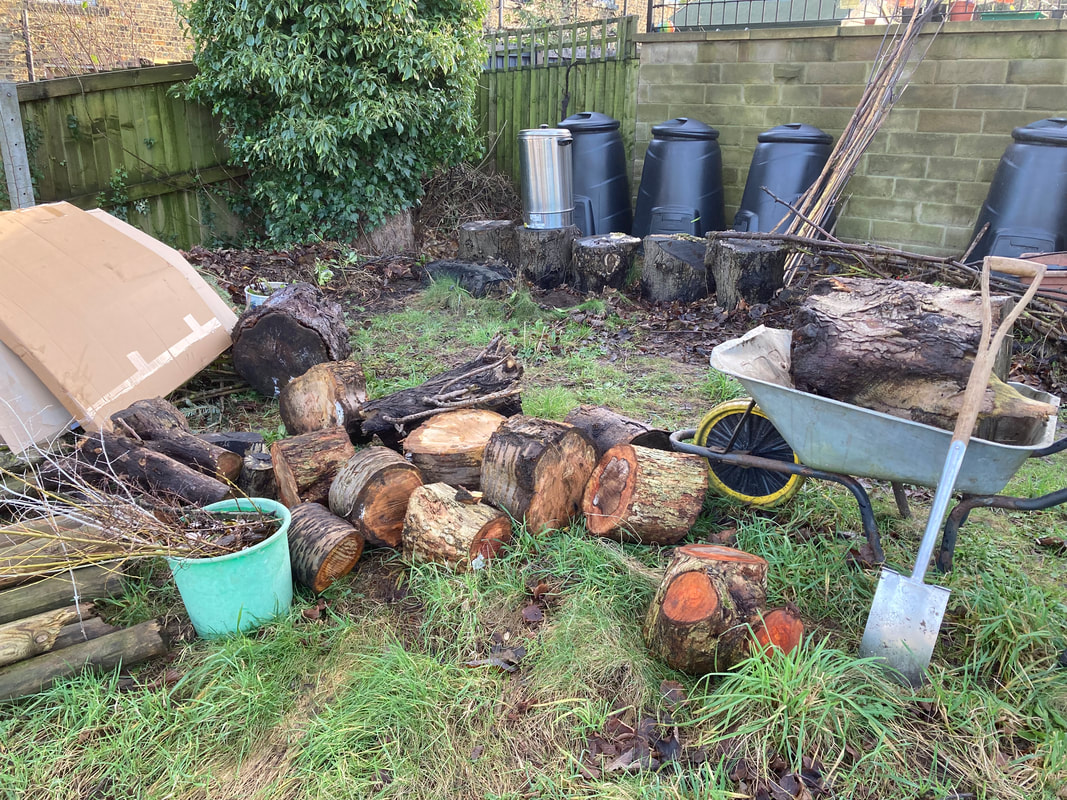 Quite a few garden projects have been started over the past few months. The relentless wet weather has meant that progress has been slow, but some things are starting to take shape now. I’m going to be writing some blog posts about specific designs, but for now here are a few photos of the general scene! 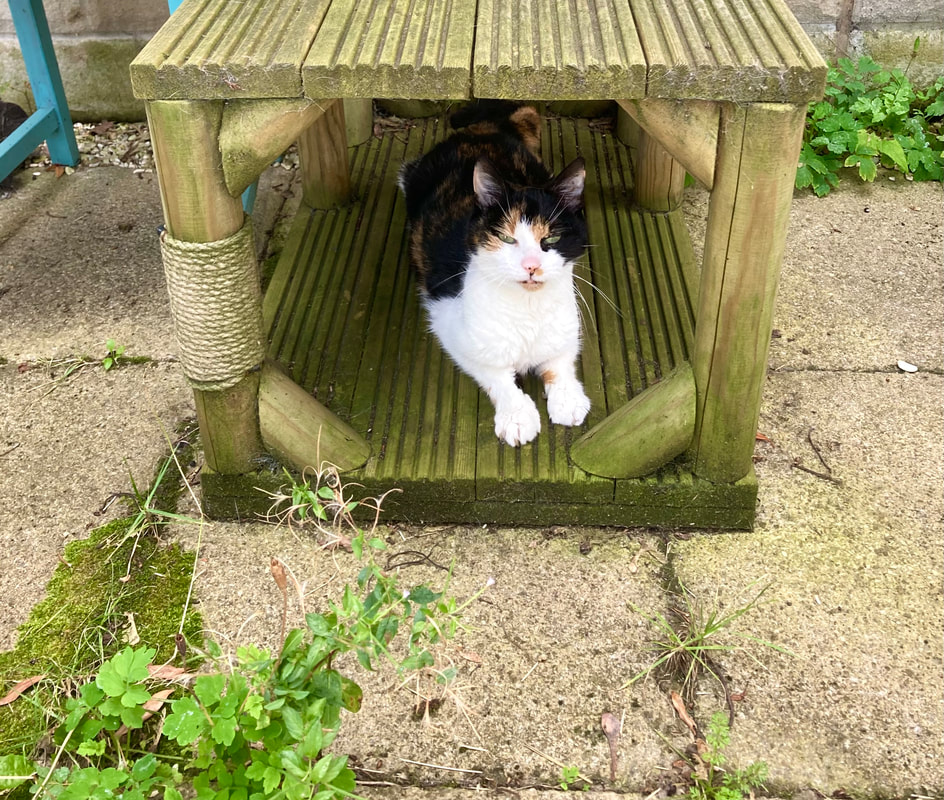 And finally, I said goodbye to this little old lady last month, 20 year old Socks loved spending the fine (and not so fine!) days of her twilight years hanging out in the catio accessed through the kitchen window. Her sister Sooty is still very fit and well and I’m sure that once the rain stops she will be back outside to watch the world of Saltaire Rd go by.
0 Comments
It’s just over eight months since my border collie Floss died. Two and a half seasons have passed. Ever since then I’ve had a strange low level disconnect from my garden, which is the opposite to what I predicted. Yes things have happened, (nature doesn’t stop for grief, luckily), but it’s all felt mundane, hard work and to be honest, a bit pointless. So its been really useful today to look back at photos I’ve taken in the garden over that time and be reminded of some times where I felt my garden holding my hand as I’ve wandered through these weeks and months.
Here are a few of them. In a totally unplanned way, this year I’ve joined the volunteer planning team for Shipley Town Council’s Shipley in Bloom project. Its been great to get involved with the creation of two new gardens in public spaces in the run up to the Yorkshire In Bloom judging, which happened a couple of weeks ago. I’m now looking forward to being part of the long term plans for growing spaces in Shipley which includes a lot of regenerative visioning and doing for both communities and environment.
Floss. April 2010 - March 2023This spring in my garden (and all other areas of my life), has been totally dominated by the death of my best buddy Floss, who died at the Equinox. At 13 years old she’d been fading for several months and although her death wasn’t unexpected, the anticipated then actual grief of loosing her from my life has been huge. As a result some core things planned for the garden this spring including taking regular photos have happened late or not at all. Here are pics of some of the activities and events which have taken place. 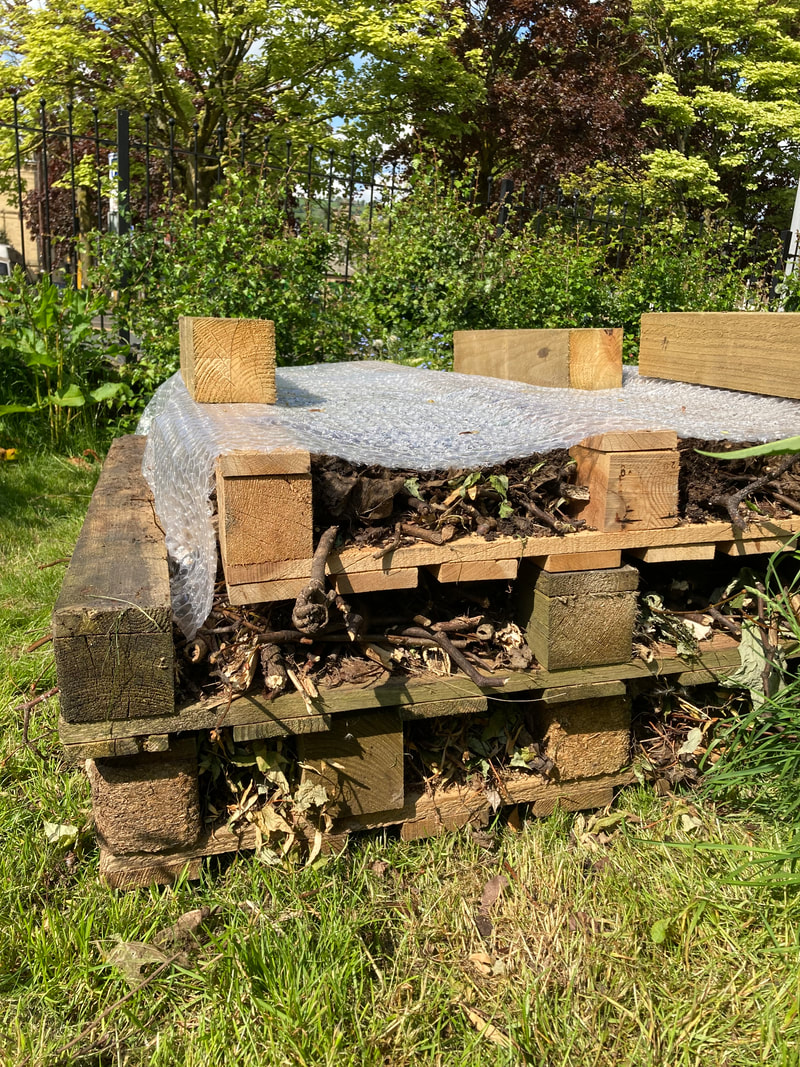 I built a pallet structured insect habitat (or ‘bug hotel’), near my garden gate and within clear sight of both pedestrians and road users travelling by. One of the functions of the garden is to provide inspiration to folk in my local community. (I sowed some annual wild flower seeds in compost on top of the pallet stack, the bubble wrap is to keep the birds away until the seeds germinate) I’m excited to be participating in some great local events over the summer months. Everyday Permaculture Workshops, Saltaire‘Everyday Permaculture’, my series of monthly two hour workshops at my neighbours, the brilliant Salts Works workshop space in Saltaire, West Yorks, continues on the third Saturday of each month 10-12pm . ‘Everyday Permaculture - Climate Actions’ takes place on June 17th, ‘Everyday Permaculture - Designing Events on Saturday July 15th and Everyday Permaculture - Right Livelihoods on Saturday 19th August. For more details and how to book, click here Saltaire Arts TrailIt will be my second year hosting the work of 2 other artists alongside my own creative work as part of the super popular Saltaire Arts Trail - taking place over the late May Bank Holiday weekend 27th-29th May. People walk through the wildlife area of my garden to get to my edible gardening area and kitchen where work by Cameron Ling, Felicity Pockets and my permaculture themed illustrations will be displayed. Shipley Open GardensThis year for the first time I’m participating in Shipley Open Gardens for the first time - happening over the weekend of the 10th and 11th of June my permaculture inspired garden in Saltaire will be open from 1-5pm both days. I’ll be selling my zines, cards and prints from my kitchen, where vegan chai and flapjack and permaculture info will also be served! Through the weekend I’ll also be hosting work from one of the amazing ceramic artists at Hive Community Arts Shipley’s Great Big Green WeekMy Open Garden and June Everyday Permaculture workshop (both events as above) are also part of ‘Shipley’s Great Big Green Week’, connecting to the national Great Big Green Week initiative Saltaire FestivalAnd round the corner into September, I’ll be taking part in the Open Gardens weekend of the brilliant Saltaire Festival, which will be celebrating its 20th birthday this year. Saltaire Festival takes place from 9th -17th September, the Open Gardens event is over the first weekend, Saturday 9th & Sunday 10th.
I love this South facing wall in my edible garden so much - such a great example of using microclimates. Early January saw me sorting though my seeds to work out what I needed to order for the year ahead. It turns out, I don’t need to order any! Where do all these seeds come from!? Mulching raised beds and the wild garden ‘edge’ with a thick layer of leaves topped with woodchip supplied by a local tree surgeon. The soil along the wild garden edge is looking, smelling and feeling SO much better in terms of fertility and structure, now into its 3rd year of this winter mulching application. Imbolc fire with my girl. Beautiful fungi Pruning back some of the larger baby trees in my wild garden edge, so that the more recently planted ones get enough space and light. I added these prunings to two different insect habitat areas. Creating a new area for fallen leaves, including leaves from several of my neighbours’ gardens. 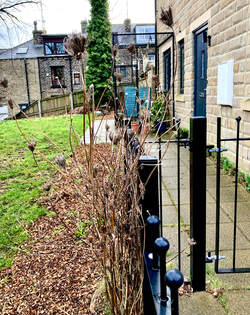 Cutting down seed heads, (intentionally left standing over the winter for insect habitat) ready for new growth in spring. Tied the dried stalks complete with seed heads together and left upright so that the little critters can carry on snoozing until the days get lighter and warmer. …..and to mark the start of 2023 growing season, I had a stall at my local Potato Day, 40 varieties of seed potatoes and lots of amazing people buying them and supporting the accompanying stalls and cafe too. I’ll be sowing my chilli seeds over the next few days. More details about this years growing in my next blog post.
I’m excited to be facilitating a series of 11 workshops throughout 2023, about how to use permaculture design in everyday life situations and events. The 2 hour monthly workshops are taking place at my brilliant neighbours, Salts Works in Saltaire, Bradford. Through relaxed information sharing, creativity and informal discussion, these workshops will enable participants to explore how permaculture can be used to navigate everyday life in ways that connect with our values. Each workshop focuses on a different topic and is created to be enjoyed as a stand alone event or as part of the year long series. Access Places are limited to 10 per booking. Salts Works is accessible for people using mobility aids, including wheelchairs. This includes an accessible toilet. There is also an accessible garden for anyone who needs a break from being indoors. COVID 19 Please feel free to wear a face covering/mask in the workshop, if this gives you the confidence to participate. People are asked not to attend if they have any symptoms of a new bug or virus. Cancellations for a full refund are available until 24 hours before the event. Also Each workshop costs £20. The price include hot/cold drinks, vegan & gluten-free sweet goodies and a takeaway mini zine about the main themes of the workshop. The Workshops - Details & BookingEveryday Permaculture - An Introduction
Saturday 18th February 10.00 - 12.00 Everyday Permaculture - Edible Gardening Saturday 18th March 10.00 - 12.00 Everyday Permaculture - Health & Wellbeing Saturday 15th April 10.00 - 12.00 Everyday Permaculture - Wildlife Spaces Saturday 20th May 10.00 - 12.00 Everyday Permaculture - Climate Actions Saturday 17th June 10.00 - 12.00 Everyday Permaculture - Designing Events Saturday 15th July 10.00 - 12.00 Everyday Permaculture - Right Livelihoods Saturday 19th August 10.00 - 12.00 Everyday Permaculture - Caring For Others Saturday 15th September 10.00 - 12.00 Everyday Permaculture - Death, Dying & Bereavement Saturday 21st October 10.00 - 12.00 Everyday Permaculture - Winter Festivals Planning Saturday 18th November 10.00 - 12.00 Everyday Permaculture - Designing 2024 Saturday 16th December 10.00 - 12.00 Please feel free to email me if you have any questions about these workshops Edible GardenThe view of my edible garden (from my bedroom window), on the last day of October The last of my bean and courgette/squash harvest (supervised by Floss) I mulched the raised bed left empty after the last of the squash and courgette harvest with the contents of one of my compost bins. ….and then sowed phacelia as a green manure cover crop/mulch to remain in place until next spring. (The glass jar of marbles and water is an insect water station. I have several of these throughout my garden, as well as being good for insects and birds, they also look pretty. Aesthetics is a big function in my garden design, I love to create beautiful spaces). A week or so later, phacelia pushing its first leaves through the newly applied compost. (The orange peel is part of my cat deterrent strategy!) This winter I’m trialing growing leafy plants (kale, chard, oriental greens) and fennel seedlings under bubble wrap. The adjacent south facing stone wall is an additional heat sink to the recycled farm plastic waste raised beds. (My raised beds are from the brilliant British Recycled Plastic in Hebden Bridge) Wildlife GardenThe baby trees and hardy perennial herbage ground cover plants on the North facing small slope ‘edge’ between the urban meadow and busy main road, are thriving after some autumn rain. This strip has been well mulched with wood chip and leaves for the past two winters and the soil fertility, water storage ability and depth has really improved. I gave several young trees struggling with the drought conditions of the summer a big water in August, but about 90% of the trees have managed without supplementary watering. I intend to add another layer of locally obtained wood chip mulch on top of this autumn’s leaves over the winter. I’ve been improving and expanding the diverse areas of wildlife (mainly insect) habitat, including leaving about 10% of my urban meadow uncut. Last winter the uncut cow parsley flowers became the home of many ladybirds over the cold months. Its been great to see how many of the perennial wild flower and grasses seedling plugs I planted directly into the urban meadow in the early spring have established themselves, despite the very dry conditions over the summer. I planted the plugs into small areas of bare earth I had created by killing areas of regular lawn grass with wood chip mulch. ‘My Garden’ zineI’ve created a zine about my garden, you can buy it from my shop right here
Saltaire Festival has been postponed for two weeks and this means that my ‘Open Garden’ as part of the festival and the My Green Community event by the Permaculture Association has also been postponed. I’ll be posting details of the changed dates here in and on my social media when they are confirmed. I’m taking part in the ‘Open Gardens & Pop-ups Trail’ event happening over the first weekend of Saltaire Festival in September 2022. Come and visit my garden in central Saltaire, where I am using permaculture design to create a space where both people and the wildlife we are connected to, can thrive. I’m having a pop-up shop selling cards, prints and zines of some of my permaculture themed illustrations from my kitchen, (accessed through my garden), too. I will also be doing short online tours of my garden through Instagram live over the weekend - more details about times will be shared closer to the event. You can connect with me on Instagram at @KtShepherdPermaculture My garden and kitchen are accessible for people using wheelchairs and there are garden benches available to sit on in the garden. Children are very welcome and will need supervising by an adult visiting with them. Dogs on leads are also very welcome and there will be water, (and possible some Scooby snacks!), available for them. More information about the ‘Open Gardens and Pop-Ups Trail’ can be found in this link. Including the map of the trail Saturday 10th September 12-4.30pm Sunday 11th September 12-4.30pm My open garden and shop event is also part of the ‘My Green Community - a celebration of practical permaculture’ event being organised by Kathryn Baker at the Permaculture Association. Summer loveliness in my edible garden, (plus sweet peas, beautiful, smell amazing, but not edible), everything seems to have survived the really hot weather last week and without much extra watering thanks to the awesomeness of mulch! The view of my edible garden from my bedroom window. I’ve been taking a photo of this view at the same time each month for the last three months, in order to observe the changes in a semi- structured way. (See June’s garden blog post) One of my favourite #fromthegarden dishes - Stuffed courgette flowers, filled with cooked potatoes, broad beans, shredded chard & kale, garlic chives - drizzled with olive oil (not grown by me!) - baked in the oven for about 30 minutes and then garnished with calendula, rocket, borage, nasturtium and coriander flowers. I have several insect water stations placed at various heights in my garden, marbles, stones and shells provide perches for insects to rest on while they drink, they also look really pretty. I cut my urban meadow over the space of two weeks, strimming small sections each day so that insects could move into adjacent areas. I left about 20% of the meadow, again in small sections, uncut, so there continues to be food and habitat while the rest of the vegetation grows again. The cuttings were all gathered and removed so that the meadow area soil doesn’t become too fertile which would result in many perennial meadow plants not thriving in future years. I used the cuttings to mulch an area of the meadow border where I have planted willow as a hedge. The willow will out grow any meadow seeds that germinate from the mulch. I left this area of my urban meadow near to my door, standing as it looks beautiful and hopefully inspirational, for anyone visiting my home.
|
Welcome to my blog. Here I aim to share everyday examples of how permaculture can provide healing and regeneration for ourselves, our communities and our planet.
Search My BlogSign up for my monthly newsletter, Full Moon Flourish. Here I will be sharing updates about my creative permaculture projects, plus links to inspiring work from other women in permaculture.
Archives
May 2024
Categories
All
|
